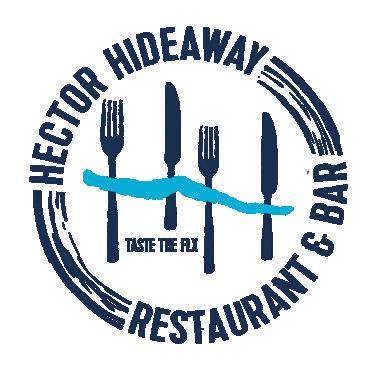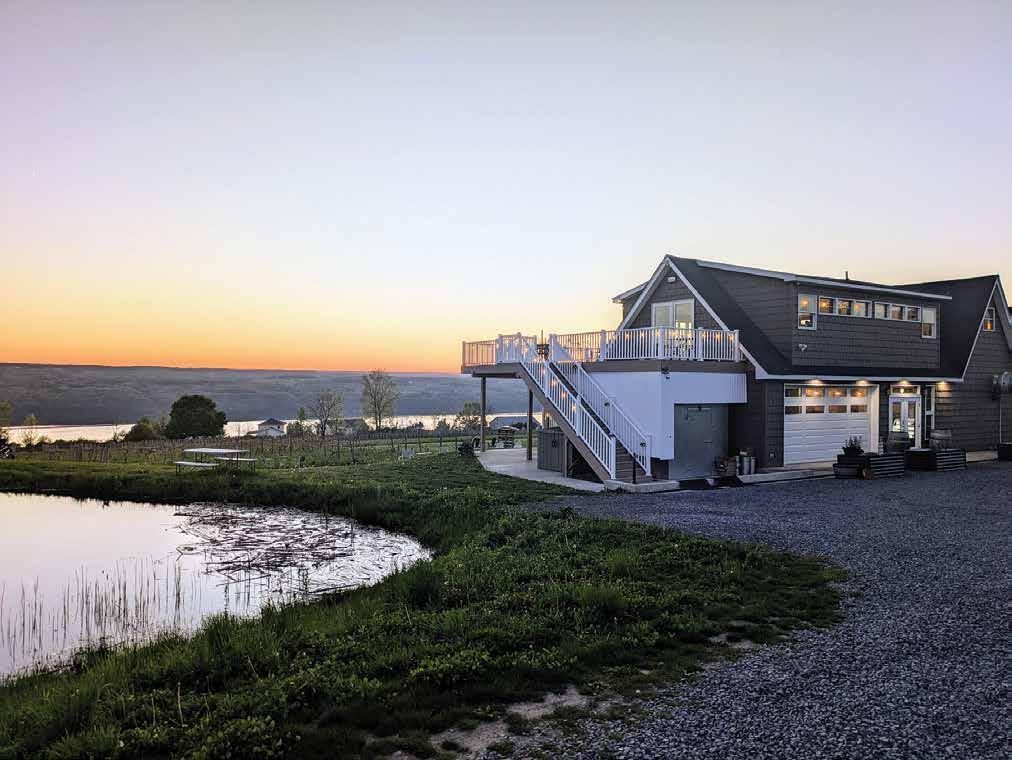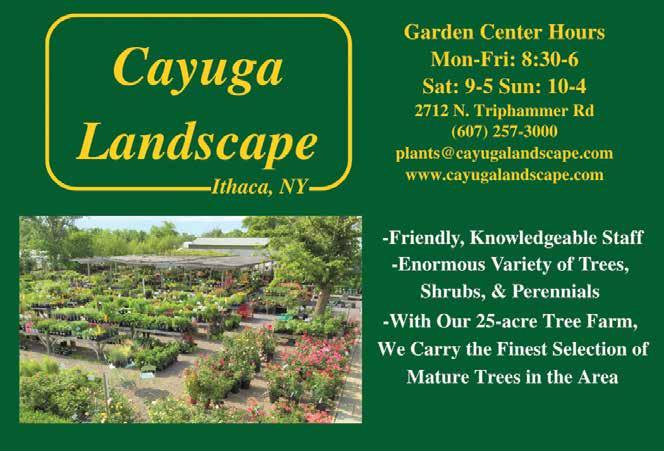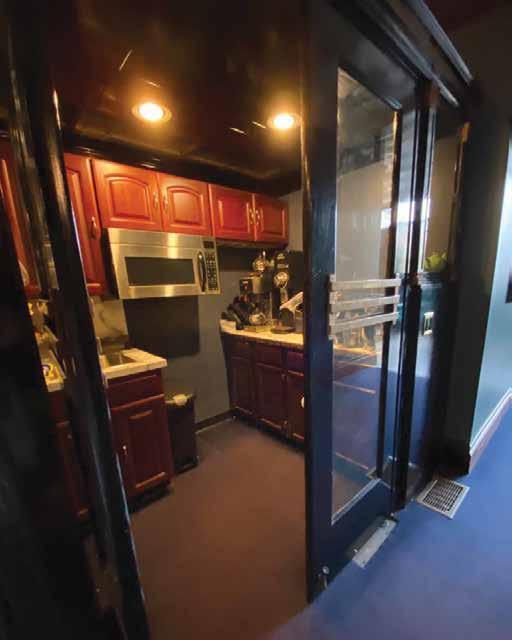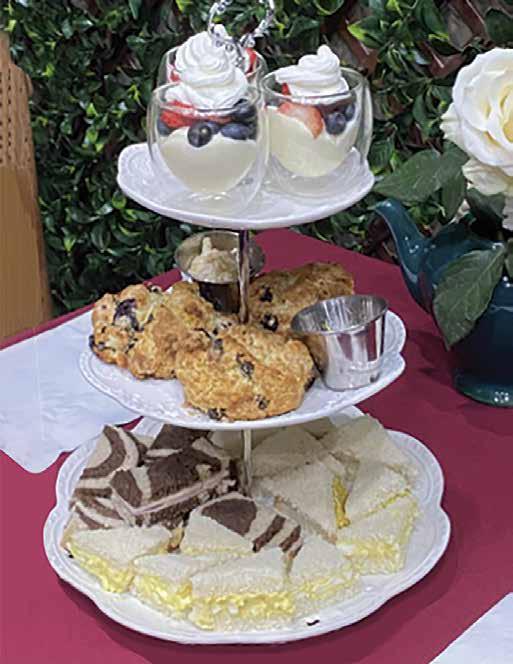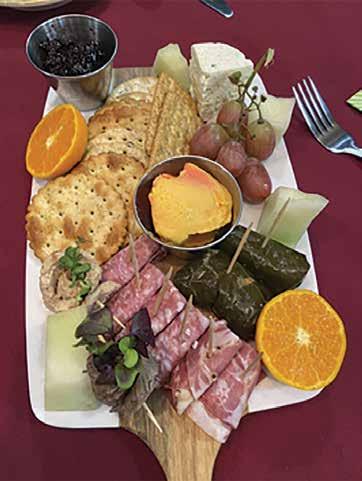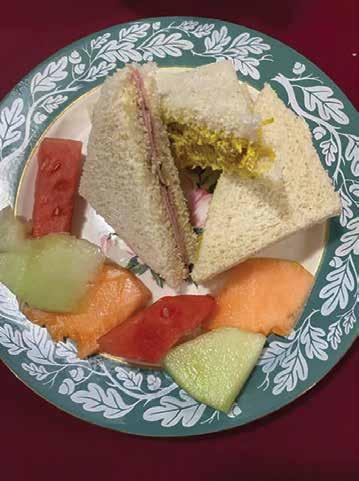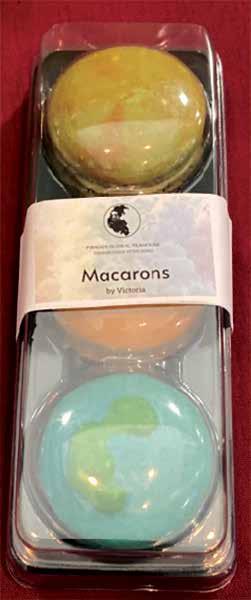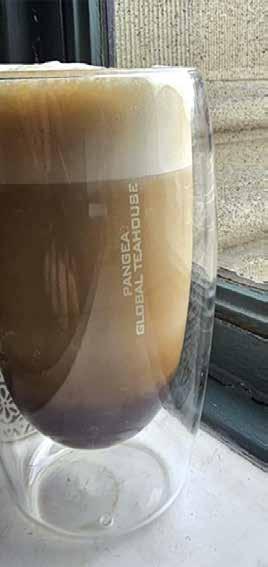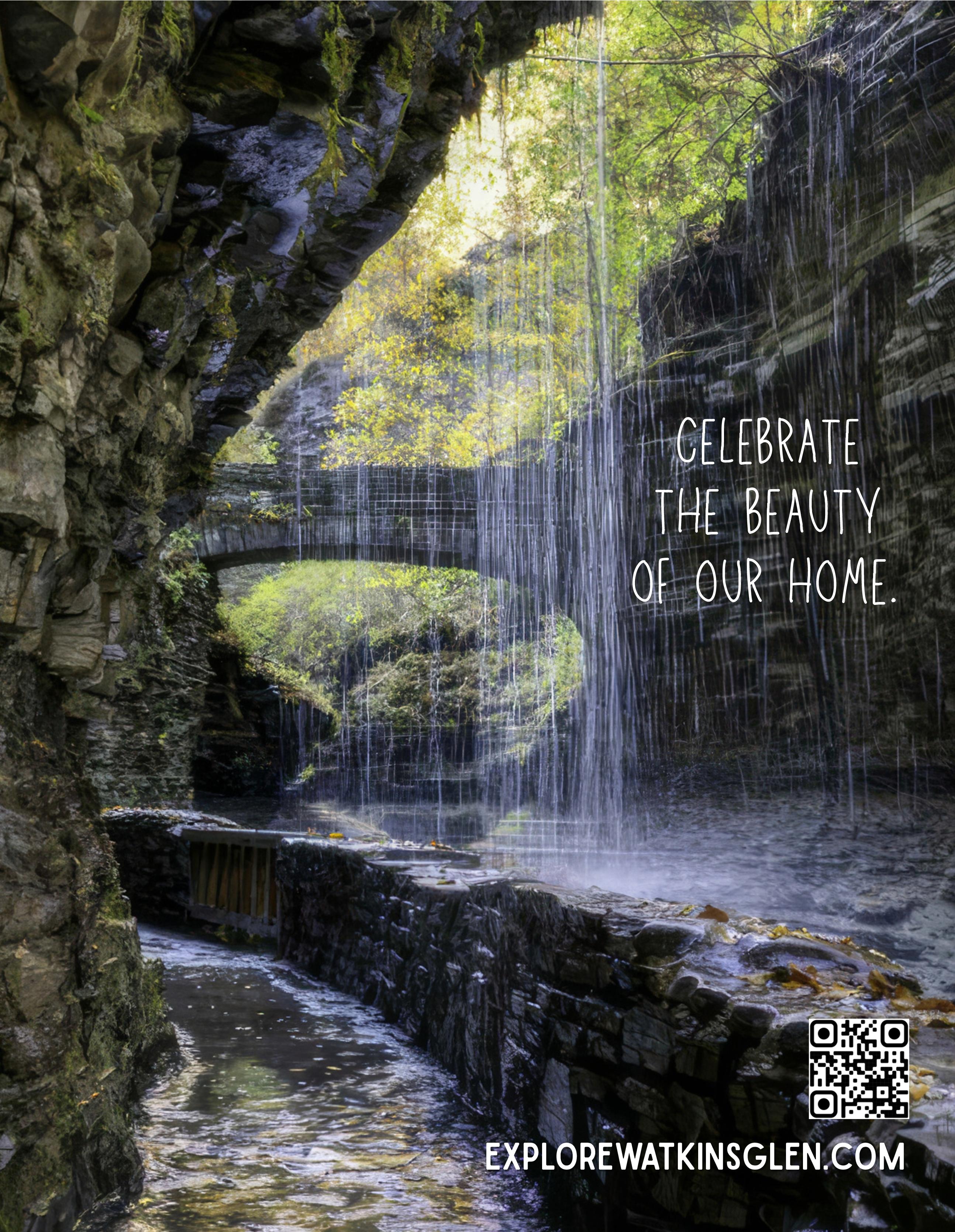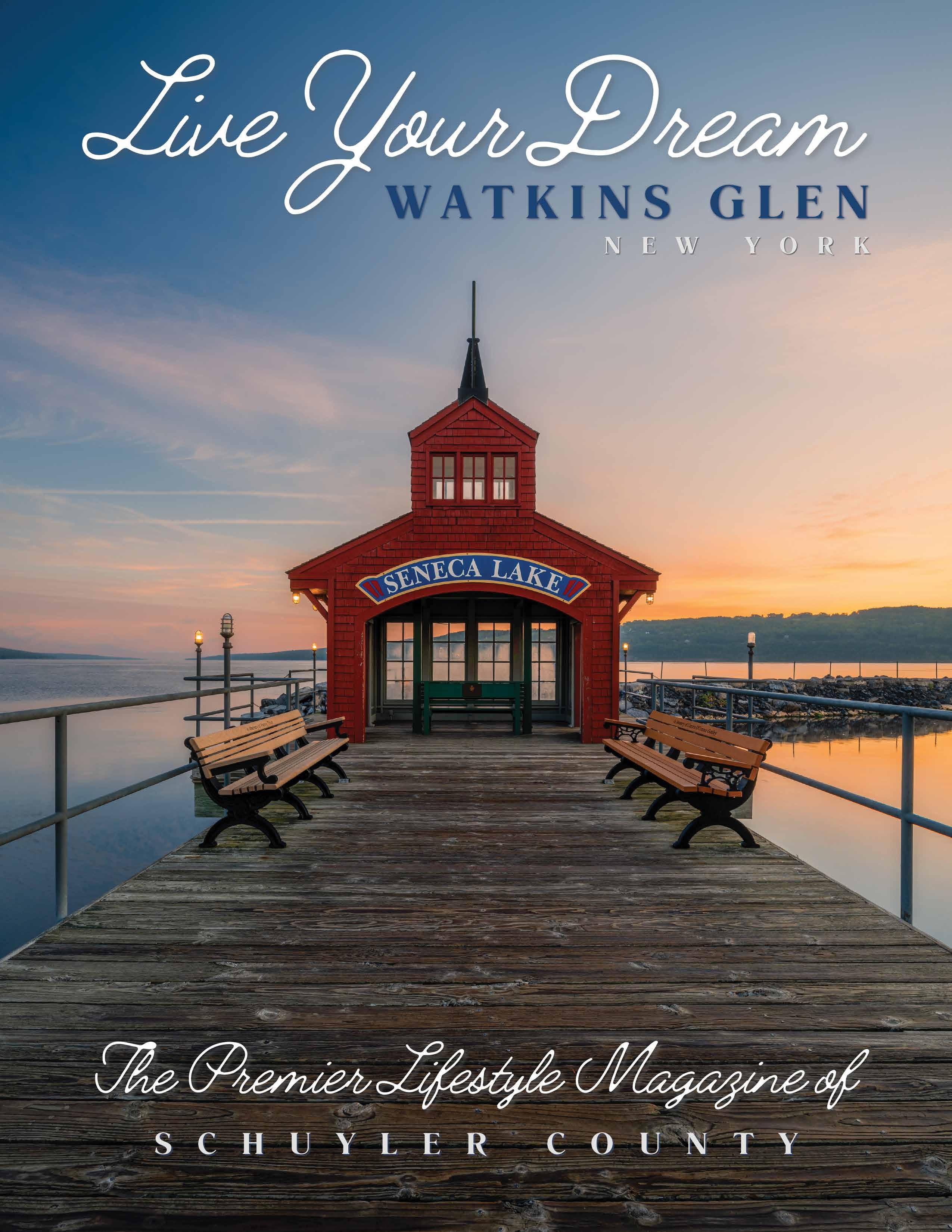
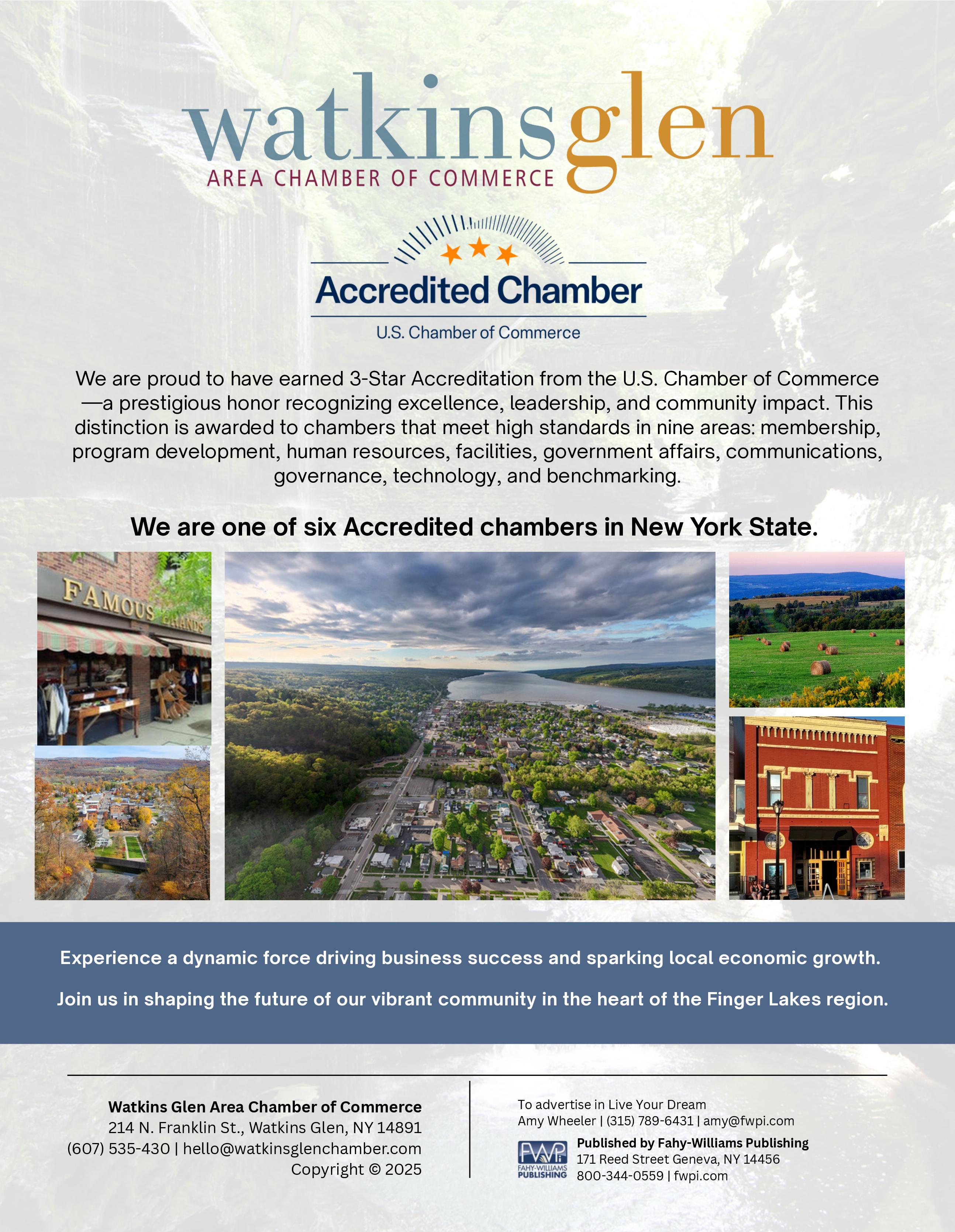



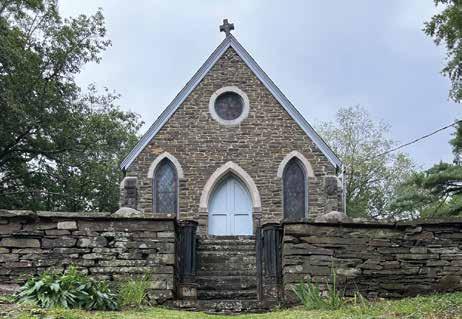
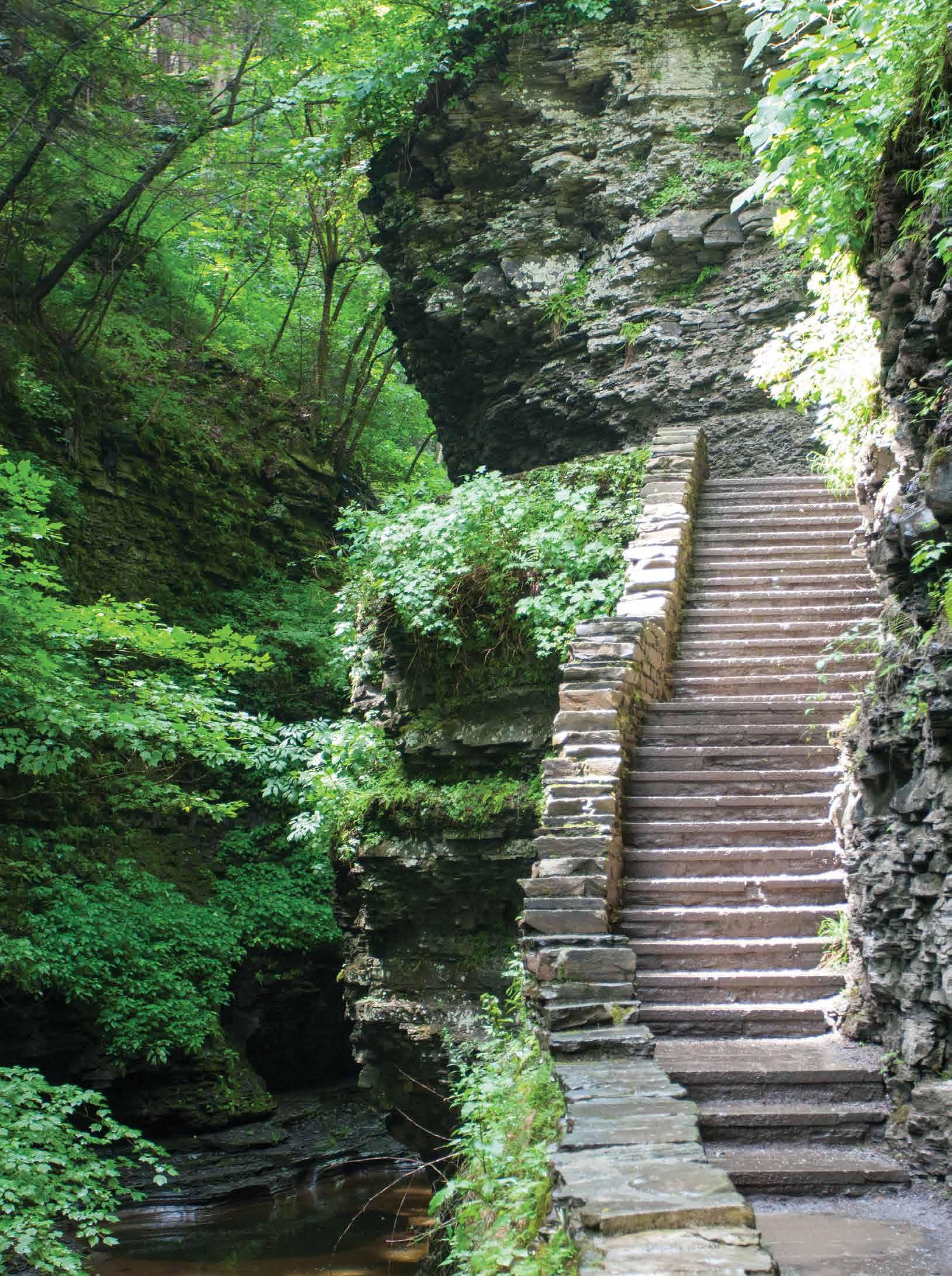
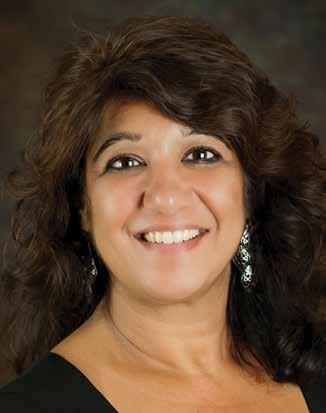









We’re so glad you’re here.
This magazine was born from a simple, yet powerful idea: that Watkins Glen and Schuyler County offer something truly special — not just a place to visit but to experience, embrace and live. Through the pages of Live Your Dream, we invite you to explore stories that reflect the authentic heart of our community.
You’ll find glimpses into family life, the pursuit of meaningful work/life balance and the joys of an enriching retirement. This publication is a celebration of what it means to thrive at every stage of life in a place that’s defined by its natural beauty, welcoming people and boundless opportunity.
So, lean into where you are. Lean into our history. This region is a remarkable intersection of outdoor adventure, craft beverage culture and global recognition, from the stunning trails of Watkins Glen State Park to the roar of engines at an international racetrack.
We hope you’ll be inspired by the voices and visions shared in this inaugural issue – and that you will see the beauty of this place, and the possibility it holds for living fully, meaningfully, and on your own terms.
Warmly,

Nigar Hale Executive Director Watkins Glen Area Chamber of Commerce

Mike happily lives in Montour Falls and is a volunteer firefighter with the Watkins Glen Fire Dept. He’s the agency owner, a topnotch agent, and friend to all.

Jason has been working in insurance for 20+ years. He regularly receives accolades for his above-andbeyond work as an agent on the Commercial Lines team.
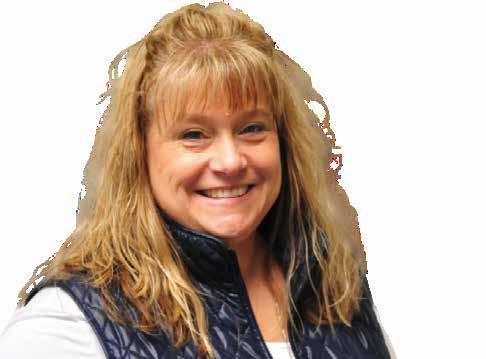
Julie is a highly-trusted member on the Commercial Lines team; she’s a wealth of knowledge! She is a “go-to” team member for problem-solving.

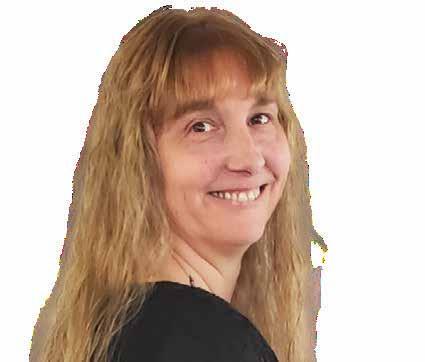
Sue has lived in Burdett for more than 30 years. She is the Personal Lines agent who can answer any question. Try to stump her! Impossible!


Taylor is a shining star as an agent on our Personal Lines Team. She enjoys having nice conversations with the insureds and saving new clients BIG money.
Brian lives in Montour Falls and works as an agent on the Personal Lines team. He’s a nose-to-the-grindstone, behind-the-scenes whiz.
Haley is a true local; she’s from Dundee and now lives in Watkins Glen. As an agent, she enjoys finding commercial insurance solutions for the “difficult cases.”


by Charles Lyles
Atthe edge of the Finger Lakes, Watkins Glen State Park’s Gorge Trail winds beside a natural masterpiece carved deep into the earth. Towering cliffs line the 1-1/2mile path, their slate, brown and mossy green layers chiseled over eons by water and wind, twisting into caverns and rugged shapes like nature’s own sculpture. Nineteen waterfalls bring the gorge alive – some cascade in delicate, shimmering threads, others thunder into misty pools, their spray catching sunlight in fleeting bursts of color.
At the heart of the park’s main entrance stands the Sentry Bridge, more than a century old. Here in the village of Watkins Glen, this stone bridge (later reinforced with metal) is more than just a landmark crossing; it’s woven deep into the village’s very being.
Sweethearts have strolled hand in hand, stealing first kisses in its shadow or pledging “I do” with the gorge as witness. Engagements, weddings, quiet moments and more – Sentry Bridge’s weathered stones have held residents’ stories, etched as deeply as the waters of Seneca Lake.
But we’re bracing for a hard goodbye this summer. Time and the elements have taken their toll, and Sentry Bridge must come down. Letting go of a landmark that’s stood for generations feels like losing a piece of home, a shared ache we all carry.
Yet, there’s a hum of excitement, too. A new bridge will be constructed, crafted with today’s ingenuity and designed to honor the original’s legacy, intended to astonish firsttime visitors and returning guests alike. The new bridge will do more than take visitors into a gorge, it will take us into the future – imagine how many millions will travel across the new one! You could be among the first when it plans to open by July 4, 2026.
As we tip our hats to the old bridge and prepare to see something new in its place, we’re reminded that it’s not just stone that endures. It’s the invisible bridges that connect people and bring them together: the laughter, love and shared moments along the Gorge Trail.
Sentry Bridge, you’ve held your post well. It’s time to rest.
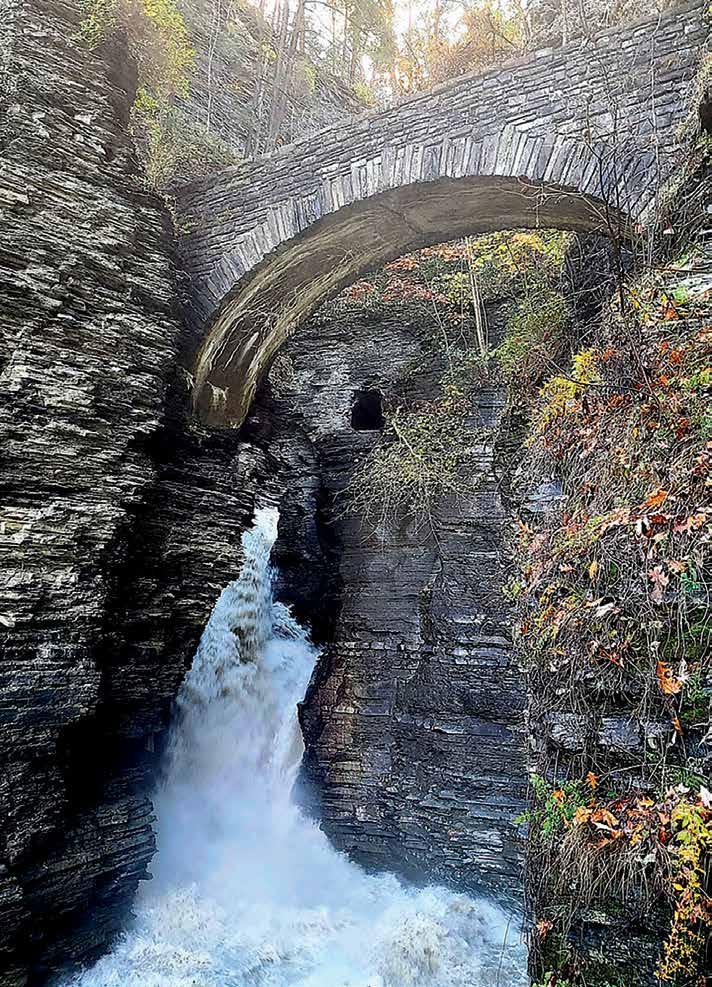
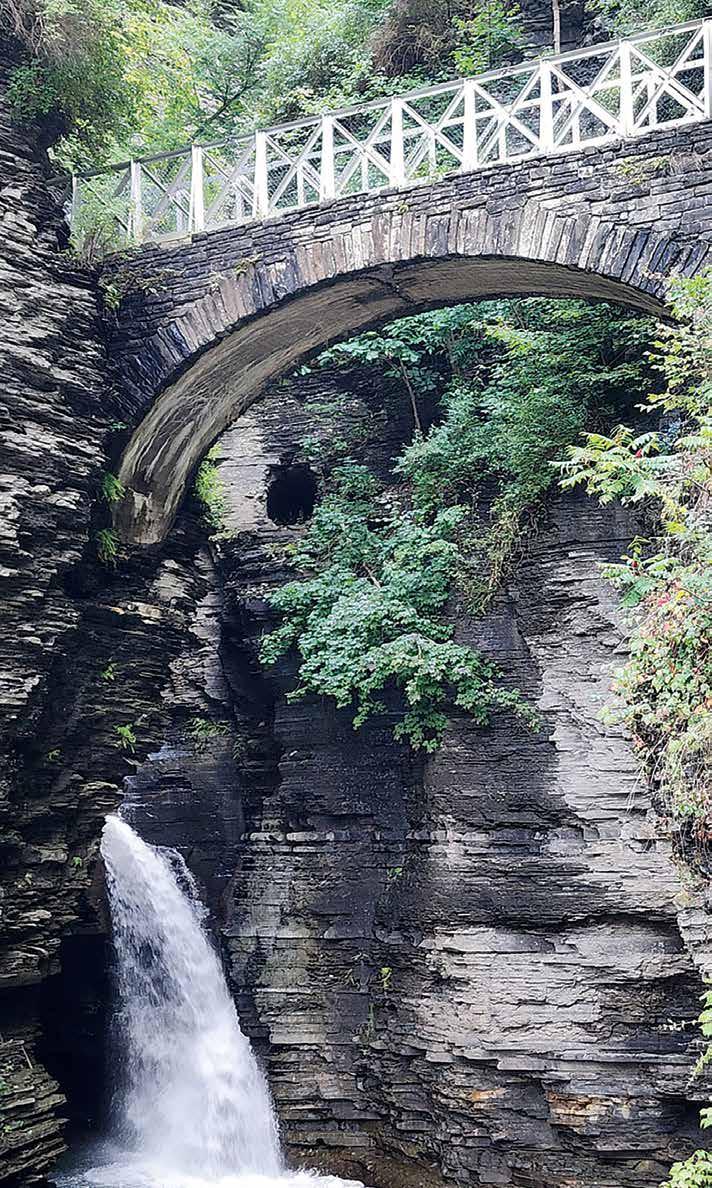
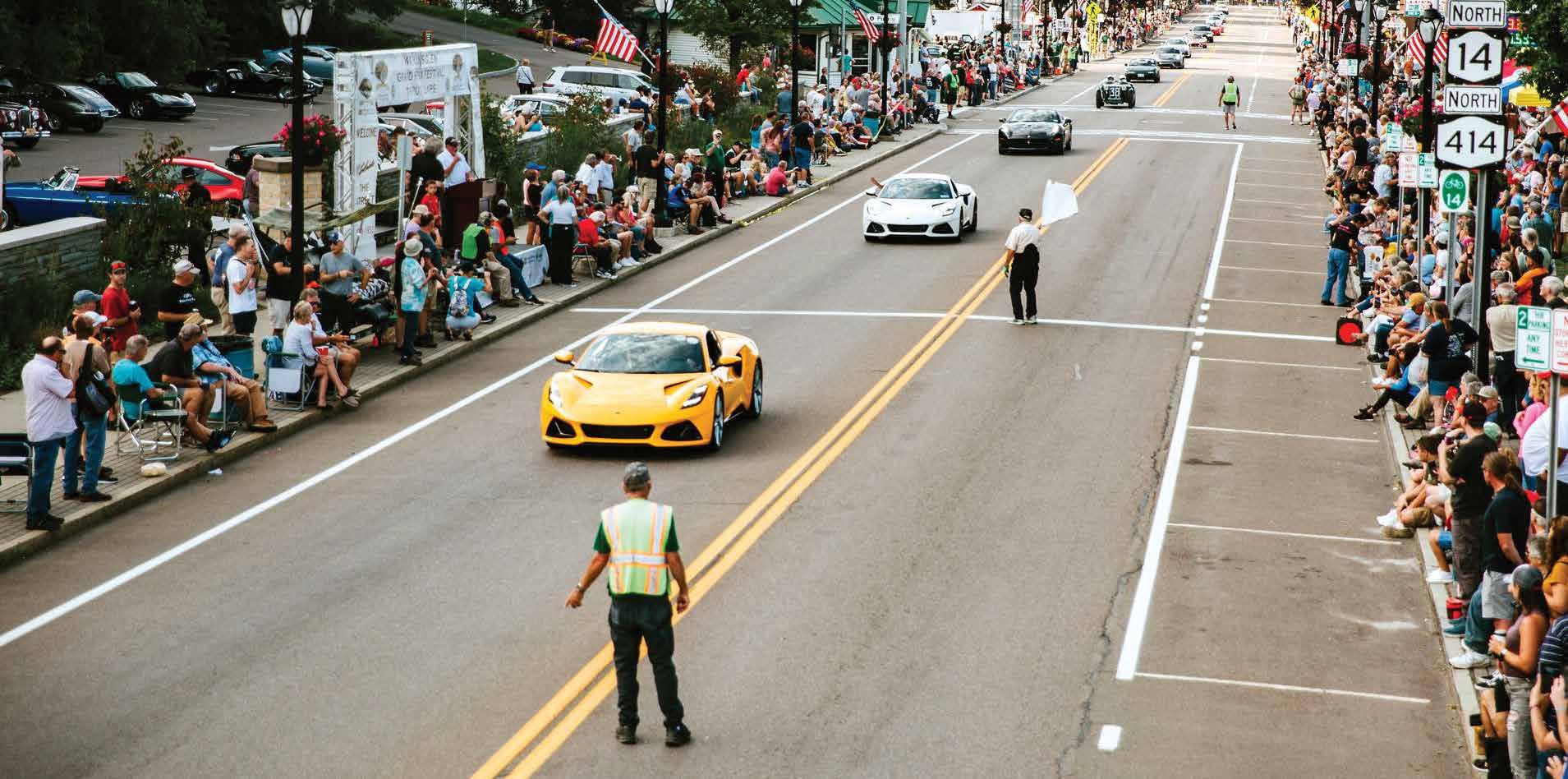
by Michaela Christensen
Community spirit runs deep in the heart of the Finger Lakes. From the echo of laughter on a warm summer night to the rumble of vintage engines rolling through downtown Watkins Glen, our region knows how to celebrate what makes it special.
At Watkins Glen Promotions, our mission is to create high-quality, unforgettable events that bring people together, honor our rich history and draw visitors from near and far to experience the unique magic of Schuyler County.
Each year, we organize six community celebrations – all completely free for spectators – thanks to the support of local businesses, tourism grants, generous volunteers and visitors who believe in what we do. Our events
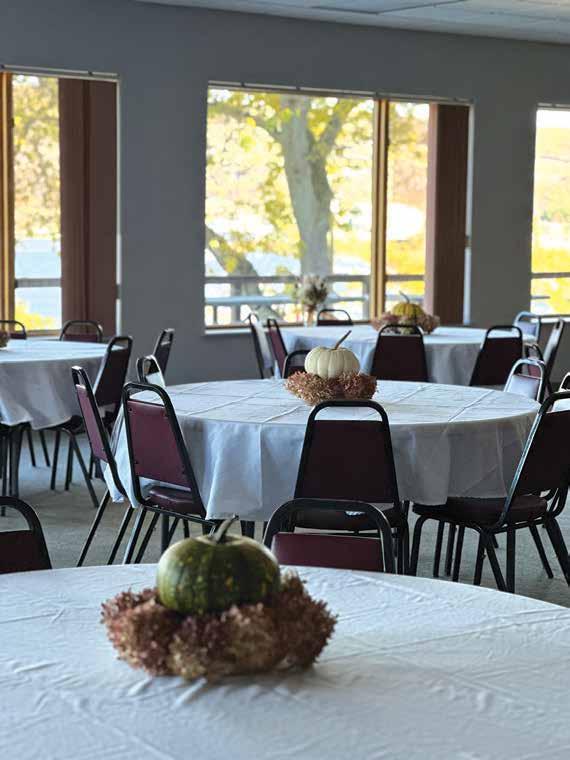
are more than just gatherings; they’re opportunities to showcase our local charm, honor our roots and build a future centered on community pride and tourism growth.
Here’s what’s in store for 2025.
Odessa Community Day – July 26 in Odessa
A growing tradition in the charming village of Odessa, this celebration brings together neighbors and newcomers for a day of live music, vendors and family fun. It’s grassroots community pride at its best.
Grand Prix Festival – September 5 in Downtown Watkins Glen
A tribute to Watkins Glen’s deep motorsports history, this nationally-
Looking for a place for your next event?
The Banquet Hall offers a beautiful setting at very reasonable pricing.
• Graduation parties
• Birthday parties
• Bridal or Baby showers
• Rehearsal dinners
• Retirement parties, etc.
Contact Liz Waite at 607-742-3321 for available dates and pricing.

Odessa Community Day
recognized event transforms downtown into a sports car haven. With historic race cars, reenactments and spirited celebration, it’s a step back in time that revs up excitement for everyone celebrating our original Grand Prix Circuit.
Montour Falls Harvest Festival –October 4 in Montour Falls
Set against the stunning backdrop of Shequaga Falls, this autumn celebration includes local food, crafts, a harvest-themed cooking demo, live entertainment and fun for the entire family. It’s a great way to savor the season and support local makers and artists. Don’t forget to stay until the end for the amazing fireworks display over the falls.
Watkins Glen Village Christmas –December 5 in Watkins Glen
Kick off the holiday season with a festive evening filled with twinkling lights, a magical parade, fireworks and the spirit of the season. It’s a
heartwarming event that brings holiday cheer to locals and visitors alike.
What makes these festivals even more impactful is that they reflect the heart of our community – welcoming, inclusive and proud of our heritage. These events highlight our natural beauty, historic landmarks, small businesses and creative culture. They’re designed to bring joy to our residents while also supporting tourism and the local economy.
To help support these free events, Watkins Glen Promotions also operates a retail storefront in the village of Watkins Glen. The shop features locally crafted merchandise, regional apparel and Finger Lakes-inspired gifts, all curated to celebrate the spirit of the area. The best part is that every dollar spent in our store goes directly back into funding festivals and community events. It’s a fun and meaningful way to shop local and support the experiences that make our area shine.
Whether you’re a lifelong resident or a first-time visitor, we invite you to join us in celebrating the people, places and passions that make Schuyler County so special. Festivals are more than just entertainment – they’re how we build connections, preserve tradition and invite the world to fall in love with our corner of New York.
To learn more about upcoming events, get involved or plan your visit, head to watkinsglen.com. The website has festival dates, vendor info, volunteer opportunities and more. Follow Watkins Glen Promotions on social media for updates, behind-the-scenes peeks and community spotlights throughout the year.
Let’s make memories together, one festival at a time.
Michaela Christensen is the director of Watkins Glen Promotions.
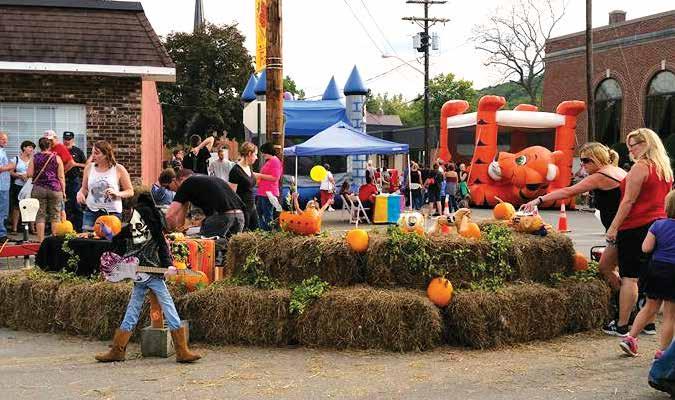
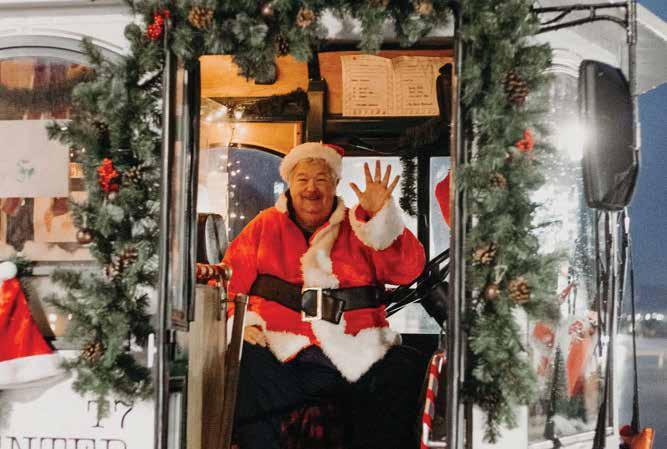
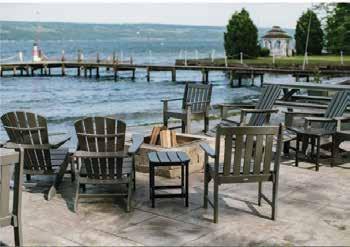


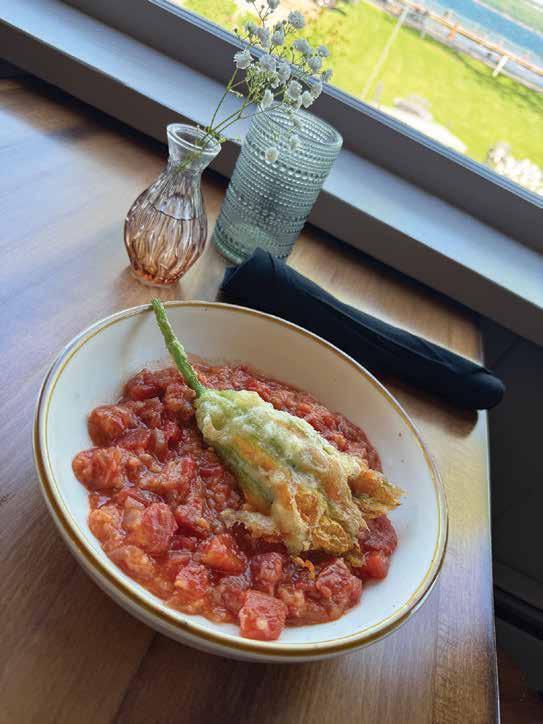
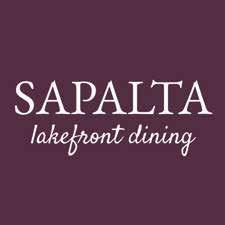
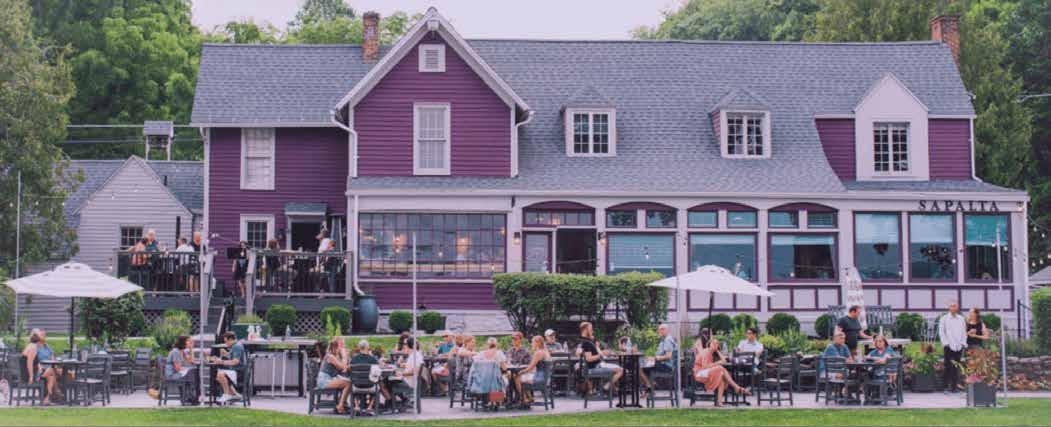
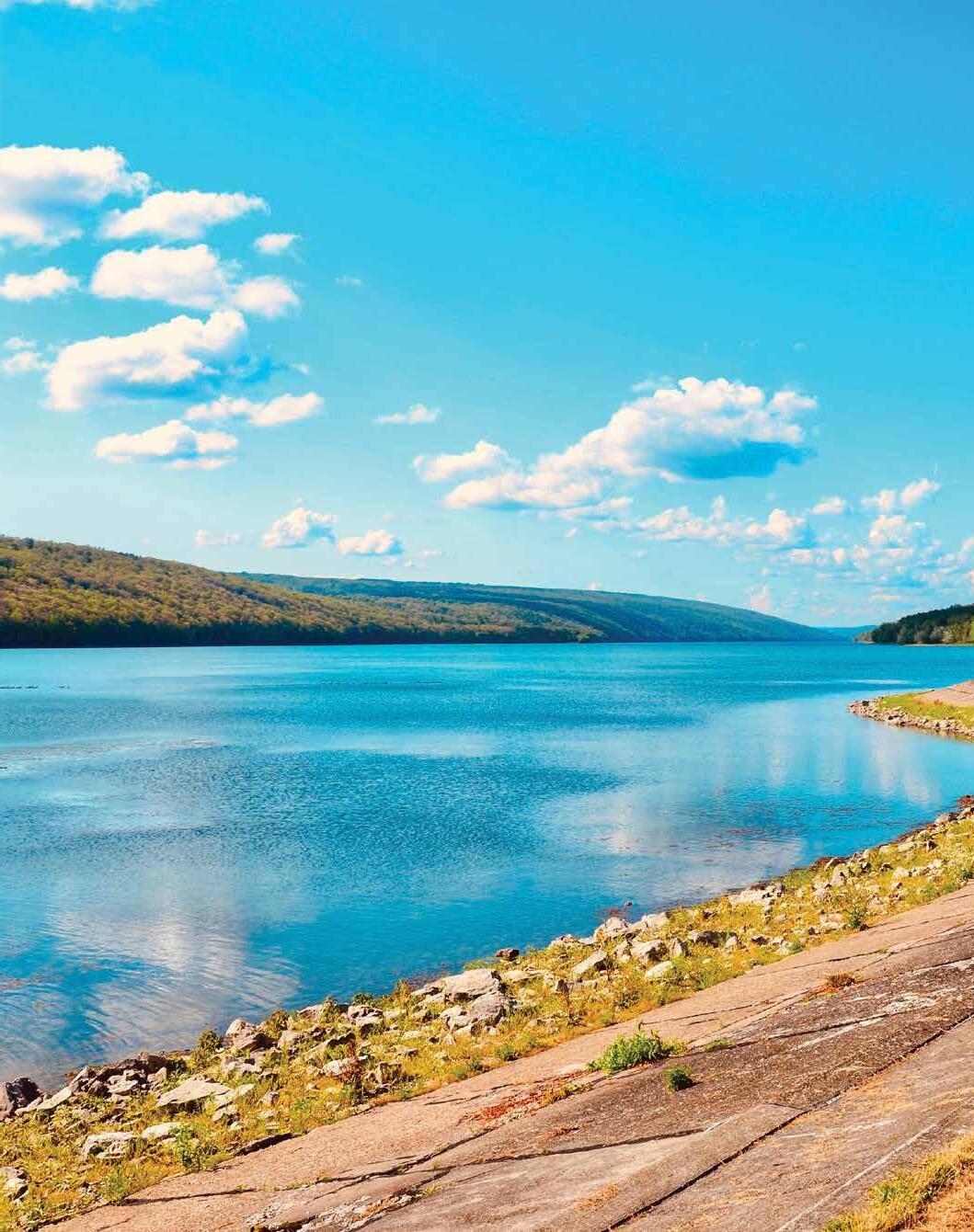


by Roger Hanson of Owego Home
In the picturesque villages surrounding the Finger Lakes, time seems to linger in the architecture. Grand 19th century structures, turn-of-the-century schoolhouses and oncebustling Main Street storefronts still stand – sometimes proud, sometimes in disrepair. But a quiet renaissance is underway, driven by a visionary partnership that’s turning forgotten landmarks into modern-day living spaces.
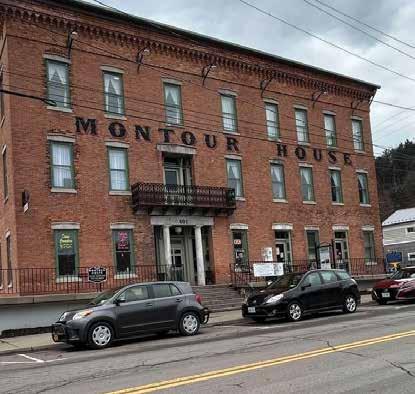

At the heart of this movement are Bruce Nelson of Nelson Development Group and Roger Hanson of Owego Home. Together, they are reshaping the narrative of what it means to preserve the past. They are not freezing buildings in time but reimagining them for the way people live, work and thrive today.
Restoration inspires imagination
Nelson Development Group, founded by Nelson, has made its name restoring historic buildings across the Southern Tier of New York. With more than three decades in the construction industry, Nelson turned his attention to adaptive reuse with a clear mission: to honor the history embedded in aging buildings while giving them a new lease on life.
Nelson’s approach combines craftsmanship with community. His projects are not simply restored. They are revitalized, often celebrated with open houses during construction to keep neighbors and interested community members involved and engaged. Every project is guided by a deep respect for a building’s original purpose and a creative vision for its next chapter.
Hanson, a globally influenced interior designer and founder of Owego Home, brings a distinctive creative sensibility to these projects. Known for weaving bold, unexpected elements into historically rooted spaces, Hanson approaches design as an art form. His background as an artist and world traveler gives him a rich palette to work from, often blending old-world textures with contemporary edge.
Together, Nelson and Hanson transform neglected spaces into architectural showcases that celebrate both heritage and innovation.

A glorious transformation: The Estates at 231 Main
One of Nelson and Hanson’s most recent collaborations is The Estates at 231 Main in Owego. Originally built in 1906 as a central schoolhouse, the structure was eventually repurposed into government offices and, over time, fell into disrepair. Where some saw an outdated relic, Nelson saw potential. After stripping away decades of alterations – false ceilings, subdivided rooms and temporary walls – he revealed the soaring ceilings and graceful proportions of the original building.

Hanson then reimagined the interiors with a luxurious, Art Deco-inspired design that channels the glamour of the early 20th century. The finished result is a refined blend of history and style: 20 upscale residences, including penthouse units, along with curated professional spaces. With metallic accents, bold artwork and thoughtfully chosen furnishings, the building now exudes a sophisticated, cinematic charm that honors its roots while speaking to contemporary sensibilities.
The project not only marked a turning point in the building’s story but also helped anchor the surrounding neighborhood, drawing attention to the beauty of Owego’s historic core.
Falls: A village reborn
Nelson’s impact can also be seen in Montour Falls, where two restorations have breathed new energy into the village.
The Montour House, built in 1854 by Charles Cook – founder of Schuyler County – was once the crown jewel of Montour Falls. By the early 2000s, it was on the verge of collapse. Roofs leaked, bricks crumbled and demolition was imminent. But Nelson saw an opportunity. Following a detailed proposal and years of careful work, the building was reborn as a mixed-use space featuring 10 residential units and four commercial storefronts. The project was recognized with the New York State Historic Preservation Award and the Preservation League’s Award for Excellence in Historic Preservation.
Just down the road, the Flats on Broadway – formerly the Montour Falls Union School and later a county office building
– was transformed into elegant residences and modern office spaces. Hanson contributed to these projects as well, staging interiors and curating art that honored the building’s academic legacy while setting the tone for modern living.
What makes these projects stand out isn’t just their aesthetic appeal. It’s their impact on the communities they inhabit. Historic buildings, once seen as liabilities, have become landmarks of renewal. Local residents often participate in the process, attending open houses during construction, sharing memories and watching as their towns are literally rebuilt around them.
Nelson and Hanson’s work is a model for how historic preservation can do more than save a building. It can anchor a town, attract newcomers and inspire pride. These restored spaces become magnets for small businesses, creative professionals and people looking to live in places with character and story.
For potential residents considering a move to the Watkins Glen area, these restored buildings offer something rare: the chance to live in a home where history and design coexist in perfect harmony.
A partnership of vision and detail
The partnership between Nelson and Hanson succeeds because it merges two distinct but complementary visions.
Nelson brings structural expertise, historical knowledge and the technical ability to bring buildings back from the brink. Hanson brings design innovation, artistic depth and a fearless approach to interiors that elevate every square foot.
Their work shows no signs of slowing down. Hanson is currently leading the transformation of the third floor of the iconic Kilmer Mansion in Binghamton, converting onceoutdated rooms into a richly atmospheric billiards room, a moody whiskey lounge and a quiet, light-filled reading room. It’s proof that the future of historic spaces can be just as compelling as their past.
Together, Nelson and Hanson do more than restore buildings – they craft spaces that tell stories.
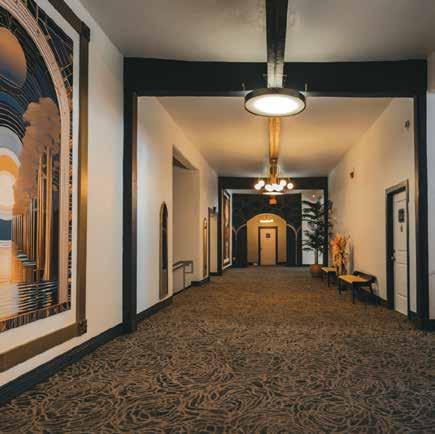


by Heidi and Wayne Pyke

Looking for your next outdoor adventure? The Catharine Valley Trail (CVT) is a beautiful, multi-use path following the historic Chemung Canal and former railroad lines. Whether you’re hiking, biking, running or simply strolling, this 13-mile trail is perfect for enjoying nature all year round!
The journey starts at Seneca Harbor Park in Watkins Glen and winds its way south to the Elmira College Domes. Along the way, the CVT connects two iconic parks – Watkins Glen State Park and Mark Twain State Park in Horseheads – offering breathtaking scenery at every step.
To help guide your adventure, be sure to download the new free Catharine Valley Trail app! The app includes a detailed trail map, parking locations, points of interest and local history. Whether you’re spotting wildlife, planning your next trailhead stop or just want to learn more about the area’s rich past, the app is a great trail companion. Search “Catharine Valley Trail” in the Apple or Android app stores to get started.
Walking opportunities for everyone
The CVT has many trailheads with parking access, including the following sites:
• Seneca Harbor Park
• State Park Parking at Decator and 10th streets
• Fairground Lane
• Intersection of Route 14 and CVT
• Cook Street in Montour
• South Genesee Street (bathroom available)
• Morris Hill Road (bathroom available)
• Smith Road
• Huck Finn Road
The CVT offers a smooth, crushed stone surface that’s perfect for anyone looking for a gentler, more enjoyable ride. In Montour Falls and Watkins Glen, the trail briefly winds through village sidewalks and roads, giving you a chance to soak in the charm of these small towns along the way. The trail is a favorite place year-round for bird watchers, dog walkers – including volunteers walking dogs from the Schuyler County Humane Society –and local community groups who make the most of its beauty. Come walk, bike, run or just explore!
There are many annual events on the CVT throughout the year. The First Day Hike on January 1 is a community hike. On the first Saturday of May, volunteers help clean up the trail or conduct maintenance as part of I Love My Park Day. Montour hosts the Festival of Races in late September, featuring a 5K, 10K, half marathon and 18-miler on the trail; this year’s Festival of Races is set for September 19 to 20.

A trail rich in history – thanks to one man’s vision
Once part of the historic Elmira to Watkins Glen Railway system, the CVT exists today thanks to the vision of the late Ed Hoffman. An Elmira-based attorney, Hoffman was instrumental in coordinating the purchase of the trail corridor and its donation to the New York State Office of Parks, Recreation and Historic Preservation (NYS Parks) in the late 1990s.

Hoffman believed that the trail would be a gift to the community, offering both residents and visitors a place to exercise, enjoy the natural beauty of the region and experience its rich culture and history.
He didn’t stop there. Hoffman also helped create the Friends of the Catharine Valley Trail (FCVT), a nonprofit, all-volunteer organization that continues to support and care for the trail to this day.




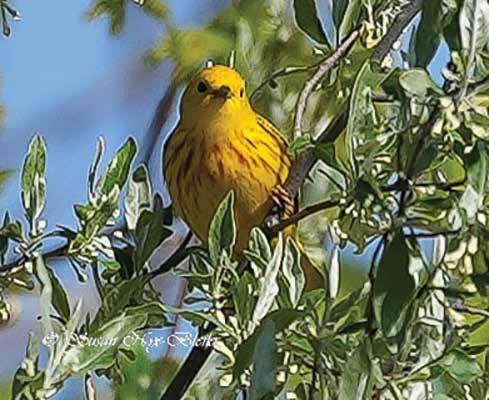
As you move along the trail, you step into living history. Just off the path between Cook Street and South Genesee Street, you’ll find the site of She-O-Qua Village, once home to the Seneca Tribe and Queen Catherine Montour.
Nearby, you’ll come across her memorial: Turtle Mound, a sacred ceremonial site that still holds great significance for the Seneca people.
In this same area stands the Cook Memorial, the final resting place of Charles Cook, known as the “Father of Schuyler County” for his pivotal role in creating Schuyler County from parts of Steuben, Chemung and Tompkins counties.
As you journey between the Fairgrounds Lane Trailhead and Route 14, keep your eyes to the sky – you might just spot some of our local eagles. Named Adam and Adele and Bella and Beau by local runner and photographer Susan Nye-Bleiler, these magnificent birds often perch in trees easily visible from the trail. You might also glimpse them soaring above the Willow Trail, which runs along the opposite side of the old canal.
Wildlife thrives all along the CVT. Watch for turtles basking in the sun, squirrels darting between trees, rabbits nibbling at the edges of the path and deer quietly grazing nearby. When it comes to birds, every outing promises new sights and sounds.
Every year on April 1, the South Genesee Trailhead buzzes with excitement as fishermen gather to celebrate the opening day of trout season on Catharine Creek. A beloved destination for anglers across the region, the creek welcomes thousands of rainbow trout each spring during their annual spawning runs. In the fall, smaller runs of brown trout and landlocked Atlantic salmon add to the thrill, making Catharine Creek a year-round treasure for fishing enthusiasts.
Further south, at the Huck Finn Trailhead, you’ll discover the Ek Birding Trail. Built through a partnership between the Chemung Valley Audubon Society, Mark Twain State Park and the FCVT, the Ek Birding Trail winds gracefully through forests, shrublands, towering hemlock stands, and past the cattail marshes that line Catharine Creek. It’s a haven for bird watchers and nature lovers!
(continued on page 14)



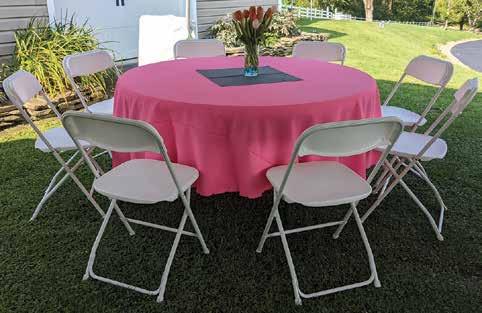
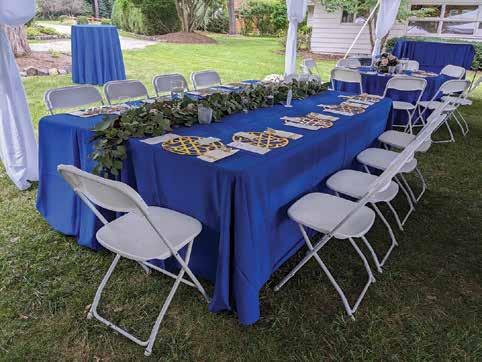


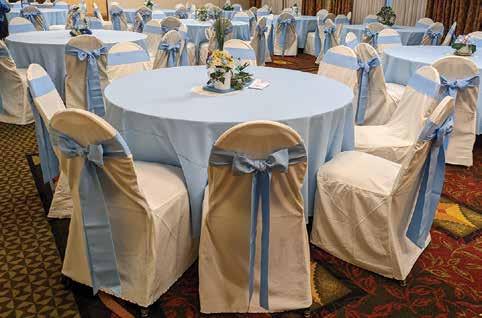
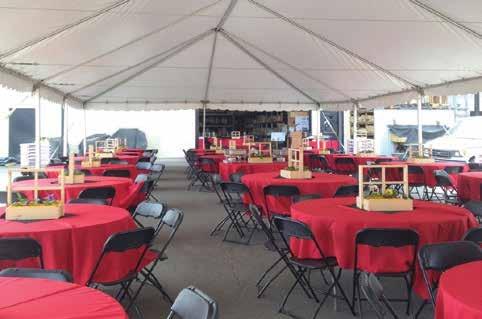
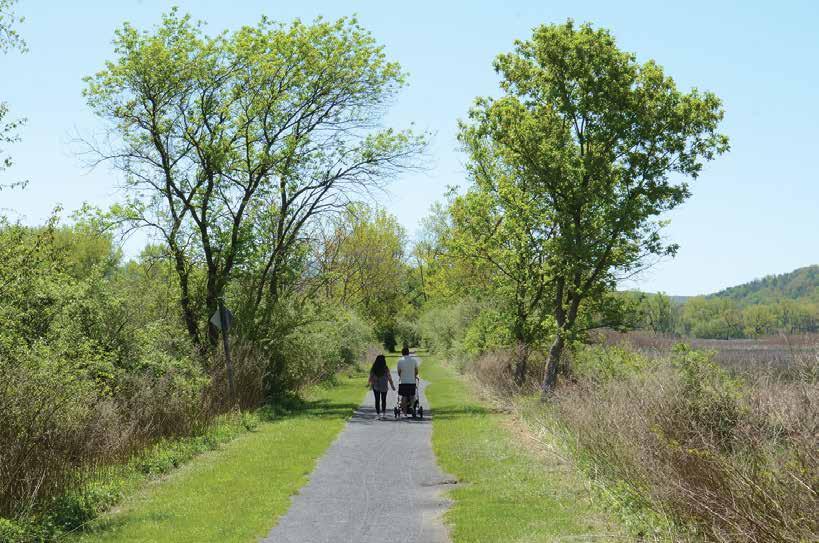

This summer, you will start to see signs indicating an audio tour of CVT. There will be more than 30 educational stops along the trail that you can read about or listen to via the CVT app.
In addition to these educational stops, the Watkins Glen Chamber of Commerce along with NYS Parks is working to purchase and install new wayfinding signs and revamping the kiosks to make navigating through the trail a bit easier.

Please consider joining the Friends of the Catharine Valley Trail. Your annual membership gift and other donations help keep the FCVT going for another year. The goal of the FCVT is to promote and facilitate a safe and enjoyable experience for all users of the trail.
Membership levels are Student ($10), Friend ($25), Family ($50), Business ($100), Sponsor ($250) and Major Donor ($500).
Funds help maintain the trail surface as well as put in improvements like signage, bathrooms, places to sit and enjoy nature or take a rest.
Pick your membership level or give a custom donation via PayPal or a check payable to Friends of the CVT. PO Box 61, Watkins Glen NY, 14891.
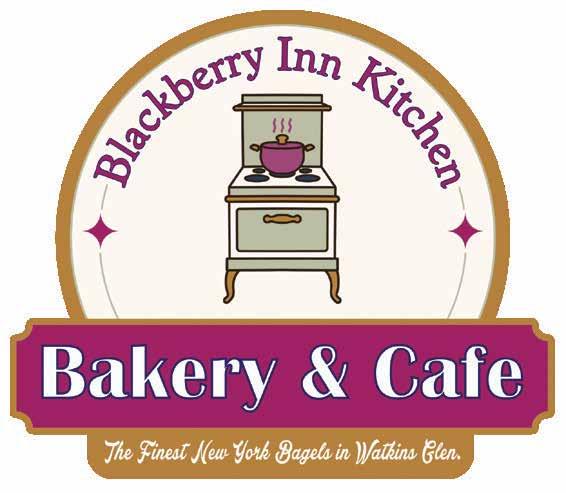
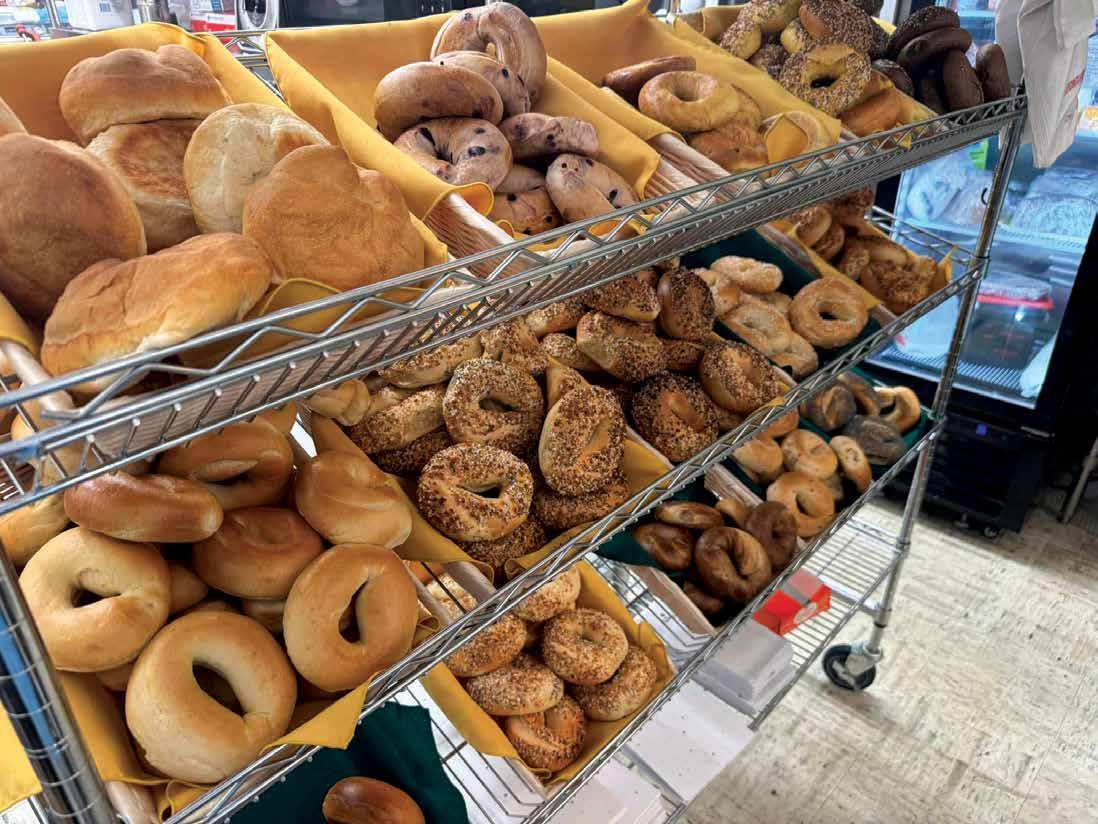
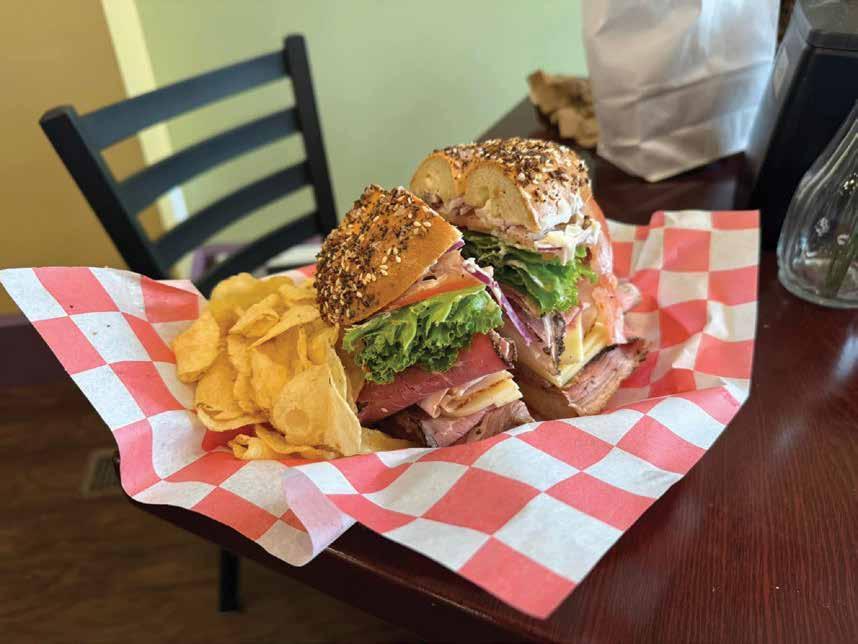

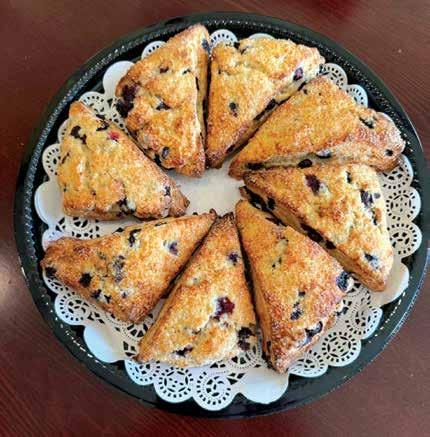
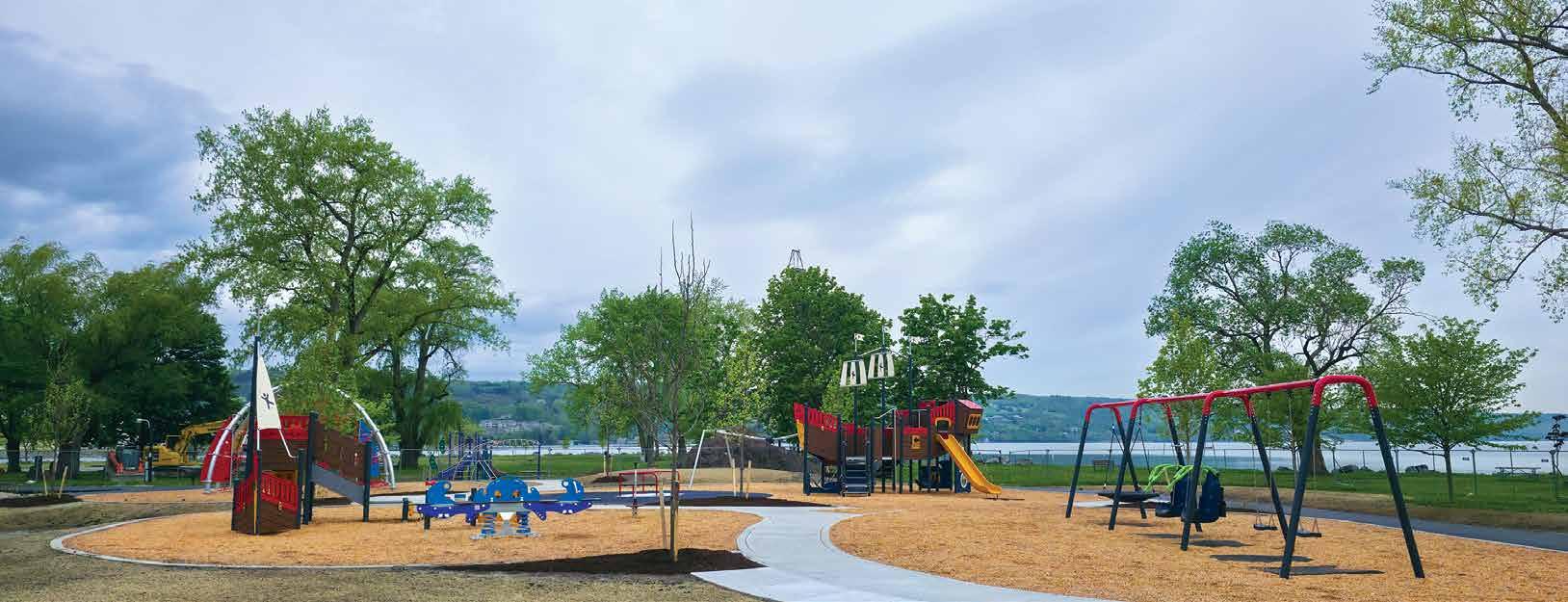
by Stacey Parrish, Superintendent of Parks & Recreation, Village of Watkins Glen
Watkins Glen is taking a meaningful step toward inclusivity. Clute Park, a treasured community space for more than a century, is now even more welcoming. In November 2024, construction began on an ADA-compliant, fully inclusive playground that invites children of all abilities to laugh, explore and play side by side.
This project is more than a playground. It’s a celebration of community values, rooted in compassion, accessibility and the belief that every child deserves the joy and freedom of play. Completed this spring and opened in May, the 12,000-square-foot playground is a vibrant, imaginative space designed to spark creativity while removing barriers to participation.
Designed for all abilities
Accessibility is at the heart of the playground’s design. Soft surfaces cushion every step. Ramps lead to inclusive swings, a wheelchair-accessible carousel and sensory-driven music panels. It is a space where the thrill of adventure and the joy of togetherness meet – where all children, regardless of physical or developmental ability, can share in the fun.
The design process was a community effort through meetings with the public and local leaders. Being the final DRI project for Watkins Glen, the outcome is a space that the community can be proud of and enjoy for many generations to come.
Themed to inspire imaginative exploration, the playground invites young adventurers to set sail on pirate ships in search of hidden treasures in Seneca Lake. With ample space and a variety of features, it promises hours of enjoyment for kids of all ages and abilities. Parents can enjoy watching children play while relaxing in the park.
Clute Park has long been a centerpiece of community life in Watkins Glen. Originally known as Sandy Beach, the park was officially founded in 1921 thanks to the efforts of a “valiant brigade of local volunteers” who famously marched –led by a trumpeting band – across the abandoned Chemung Canal to the lakeshore. In 1939, it was renamed Clute Park in honor of Warren W. Clute, president of the Watkins Glen Salt Company and a key figure in the area’s development.
The park has evolved to meet the changing needs of the community. What began as a tranquil beachside retreat has grown into a vibrant recreational hub, featuring a splash pad, walking trails, an event center, bathhouse, lifeguard station, skateboard park and seasonal ice-skating rink. The new inclusive playground is just the latest in a long line of upgrades.
Today, Clute Park also offers volleyball and basketball, pickleball courts, swim beach, picnic pavilions, grills, splashpad and an array of seating areas where visitors can relax and soak in the natural beauty of the Finger Lakes Region. In the winter, the park transforms with an ice rink.
Whether it is watching a golden sunset from a lakeside bench, running through sprinklers on a summer afternoon or hearing the laughter of children on the new playground, Clute Park remains a space for everyone. It is a living testament to the power of community and the belief that public spaces should reflect the diversity and joy of the people who use them.
The new playground marks a milestone for Watkins Glen – a joyful leap toward a more inclusive future, where all children can play, dream and grow together.
“On behalf of the Village Board of Trustees, we graciously thank Governor Hochul and the Department of State; Environmental Protection Funding Agency; Downtown Revitalization Program Agency; NYS Parks, Recreation & Historic Preservation; County of Schuyler, the local public and Chemung/Schuyler ARC for their wonderful feedback and our amazing staff who have made this possible,” said Watkins Glen Mayor Laurie DeNardo. “The changes have been transformational and will be enjoyed for years to come.”
Clute Park is open year-round from dawn to dusk. Some amenities may be weather- and season-dependent. There is paid parking from Memorial Weekend to Labor Day weekend. Parking is free in the off season and to Village of Watkins Glen residents. Pavilions and the event center are available to rent for private parties. For more information, contact the Parks Department at 607-535-4438, parksdept@watkinsglen.us or visit senecalakeevents.org.
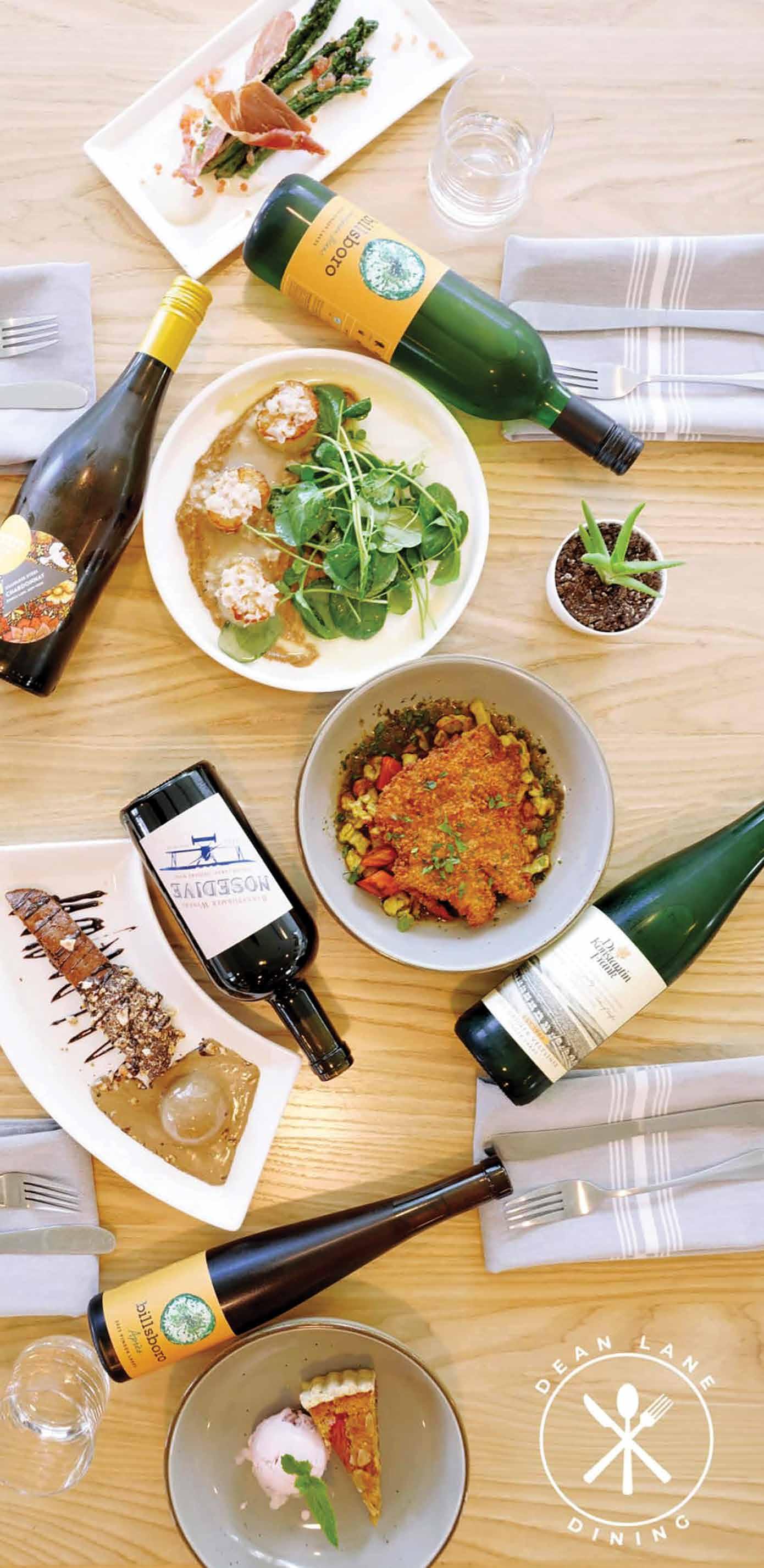
by Michael Hale
Nestled in the rural landscape of Dundee in Schuyler County lies Dean Lane Dining, one part of the three-generation family farm, bed and breakfast, and restaurant that redefines the farm-to-table dining experience. Surrounded by rolling hills, vibrant wildflowers and the sounds of nature, this hidden gem offers an escape into a world where culinary artistry meets sustainable farming practices.
The path to Dean Lane Dining traverses a variety of rural landscapes, including a stretch of dirt road flanked by open fields, forest and farmland. The restaurant itself is an extension of an historic farmhouse that complements the rural surroundings. Large windows provide views of the farmstead grounds, with patio dining available.
Inside, the ambiance is warm and inviting, with soft lighting and earthy tones creating a cozy atmosphere. The intimate seating arrangement encourages conversation, making it the perfect place for a romantic dinner or a gathering with friends. Executive Chef Michael Dean and Lisa, dessert and hospitality guru, will welcome you into their home.
At Dean Lane Dining, the culinary philosophy is simple yet profound: to provide a pre-fix menu that highlights
the freshest ingredients sourced directly from the farm. The chef’s weekly menu reflects the seasonal harvest, ensuring that each dish reflects the flavors and bounty of the local area. Each course offers a vegetarian option that is in keeping with intended spirit of the meal.
Our latest dining experience began with a carefully crafted first course of Cajun seared scallops. These perfectly seared scallops were seasoned with a blend of Cajun spices, served with sauteed asparagus, silky polenta and saffron beurre blanc. As we savored this vibrant starter, we were invited to explore the story behind each ingredient, enhancing our appreciation for the meal.
The second course featured a delectable pork belly cacio e pepe, a modern twist on a classic Italian dish. The rich, tender pork belly was paired with al dente, rustic, house-made creamy spaghetti and cured egg yolk. The crispy sear provided a beautiful textural contrast. This course exemplifies the restaurant’s focus on seasonal and locally sourced ingredients.
For the main course, we were treated to a grilled strip steak. It was expertly cooked to perfection, with a spicy sauce that included amongst the blend, pork belly juice and pasta water, highlighting the chef’s ingenuity. The steak sat atop a contrasting honey sweet toast and was paired perfectly with a Usonia Wine cabernet franc.
Dessert offerings included a choice between a raspberry lychee cake or a dark chocolate cremeux espresso mousse cake. The raspberry lychee cake featured a white chocolate rocher glaze, hazelnuts and crème anglaise, infused with raspberry and lychee flavors. The chocolate espresso mousse cake with shiny ganache is a decadently moist
(continued on page 18)
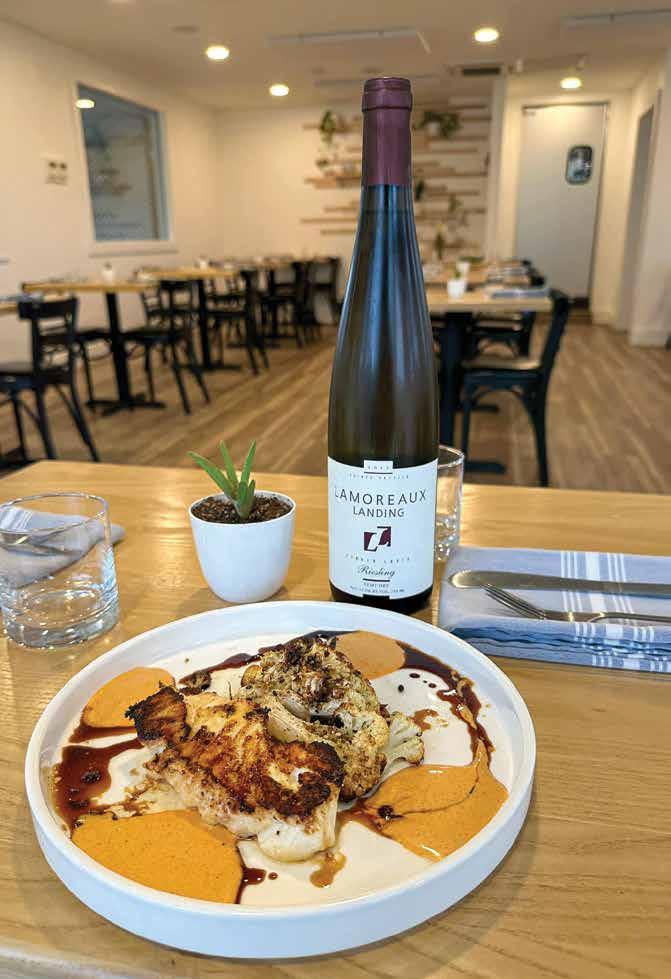
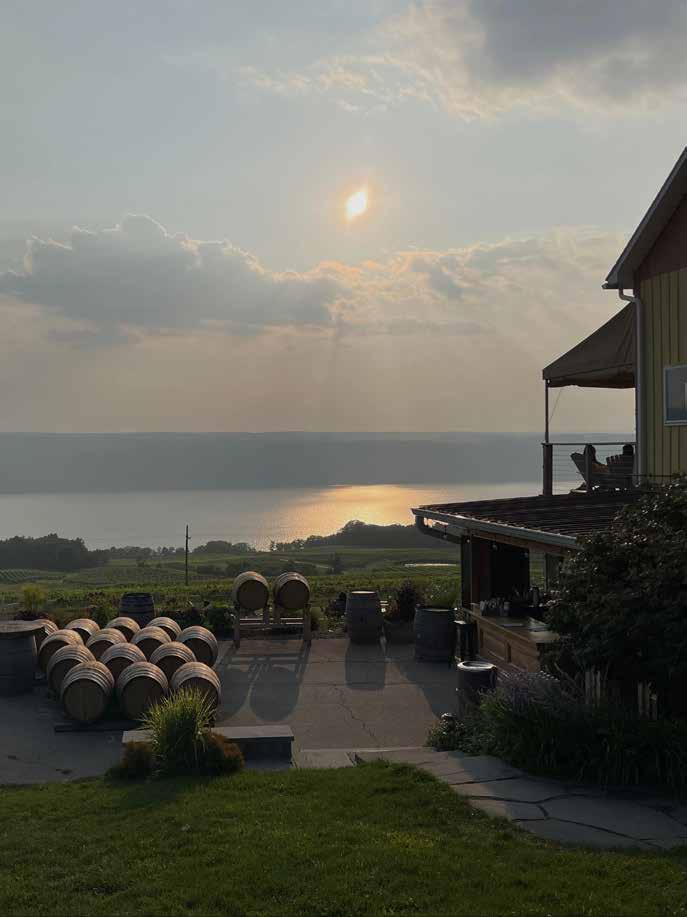
Curated Wine Tastings
Full Wine and Cocktail Bar Panoramic View of Seneca Lake Live Music
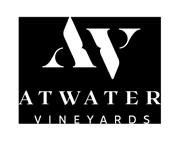
5055 State Route 414 Burdett, NY 14818
607.546.8463

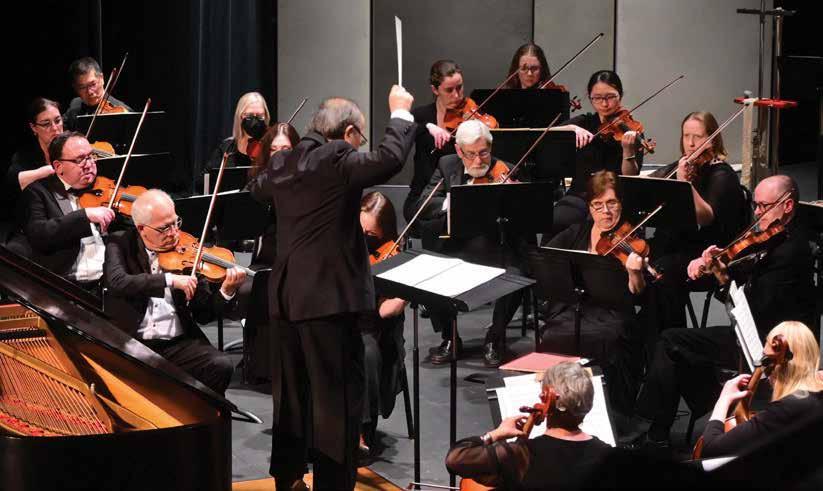




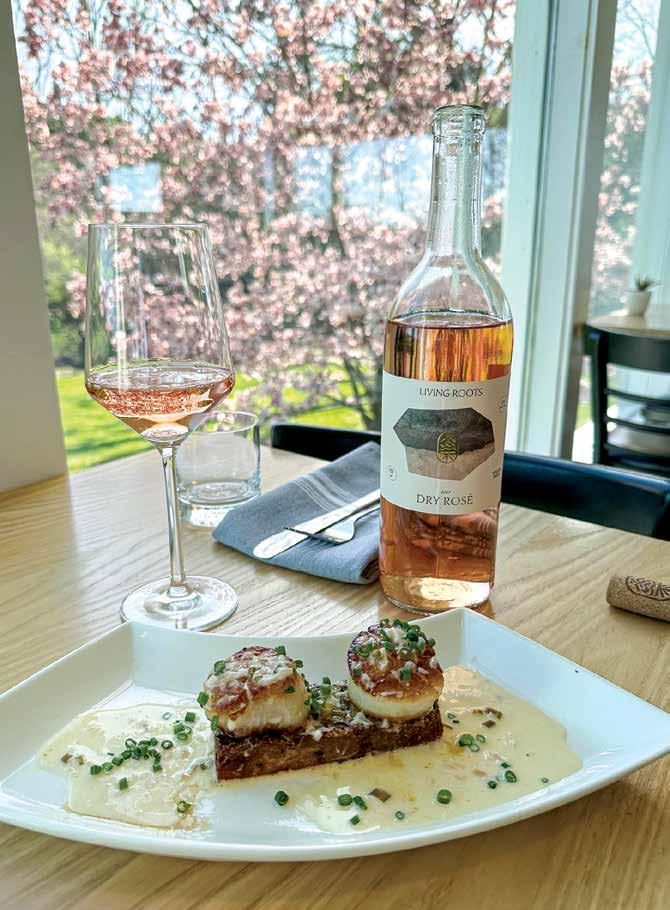
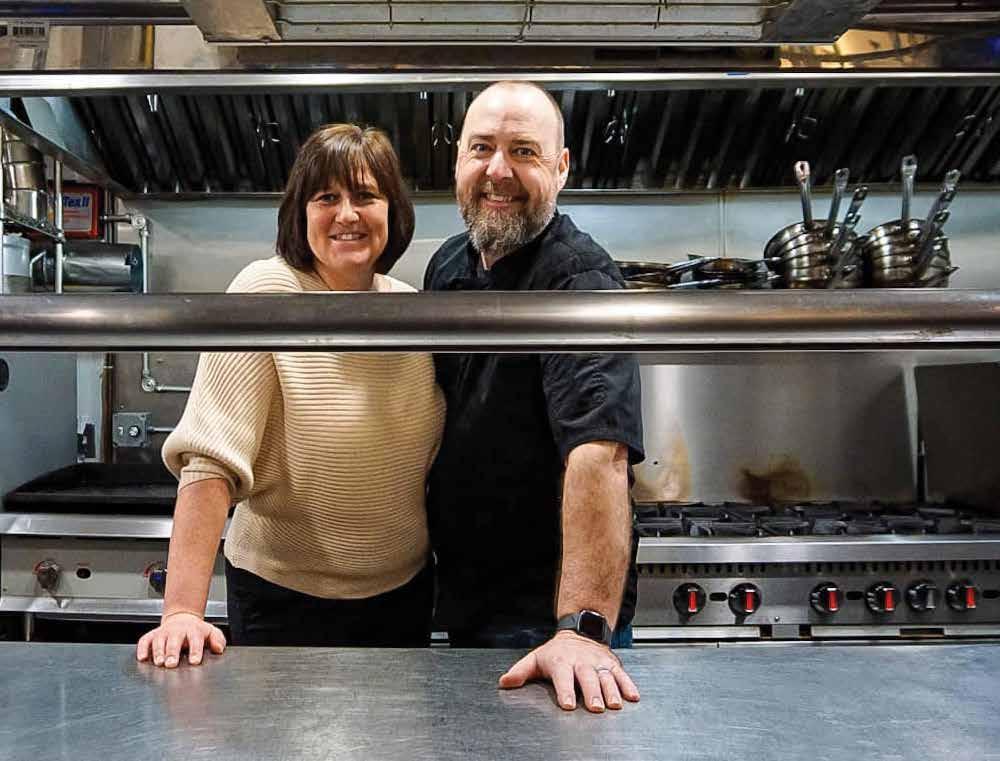
layered treat for chocolate lovers, rich and velvety with a hint of espresso.
To complement the meal, Dean Lane Dining offers a selection of local wine, ciders, craft beer and nonalcoholic drinks, each chosen to enhance the flavors of the dishes. The knowledgeable staff are eager to share their insights, guiding guests through the pairing process to ensure a harmonious dining experience.
In a world where dining has become increasingly commercialized, Dean Lane Dining stands as a beacon of authenticity and sustainability. It is a place where food lovers can escape the ordinary, savor exquisite flavors and celebrate the beauty of nature while supporting local farmers and artisans. Whether you’re a local resident or a traveler seeking a unique culinary adventure, Dean Lane Dining promises an unforgettable experience that nourishes both body and soul.
by Owen Moskal
On April 8, 2024, a total solar eclipse passed over New York. The Schuyler County Historical Society was hosting a 1920s-themed Eclipse Party, and I worked for Clute Park, organizing the parking for the day. Having had a growing interest in history since I was little, the historical society immediately caught my attention. As soon as I had a break, I searched for someone I could talk to about getting involved. This led me to Heather O’Grady-Evans, executive director of the historical society. She was more than happy to accept me as a volunteer. I started in early July and have since logged nearly 200 hours volunteering for the Schuyler County Historical Society.
“Volunteering for the historical society has been a great hands-on learning experience for someone who has been interested in history from a young age.”
Park in Watkins Glen. By the end of summer, I decided to continue volunteering at the start of my junior year in high school, coming in every Tuesday after school. From July 1 to December 31, I had logged more than 134 volunteer hours for the Schuyler County Historical Society.
In my first few days at the Brick Tavern Museum, O’Grady-Evans gave me a tour and showed me some of the ropes. She introduced me to accessions, items passed on to the museum – sometimes from family collections, for example – and were to be integrated into the museum once they had been identified. O’GradyEvans gave me about half a dozen accessioned artifacts to sit down with, identify and place on display.
Along with doing most of my work at the museum, I got to visit the historical society’s other locations, including the Lee Schoolhouse and the Lawrence Chapel. I organized, scanned records to be archived digitally and helped with the rotating exhibit over the summer. I researched and created a display board and pamphlet on the history of Clute
O’Grady-Evans has been a great mentor for me. She has helped me solidify history as something I will pursue in the future. She has supported my interest in history since the very start and has taught me many valuable skills. She even helps me with schoolwork, including writing papers. One such paper was a term paper I wrote for my ACE U.S. History course, comparing real accounts of local Civil War veterans through letters to Schuyler County newspapers. I am currently finishing a paper on the Manhattan Project and the three Schuyler County residents who played a role.
O’Grady-Evans has introduced me to many new people and helped me understand the rich history of the community.
I’m honored to have someone like O’Grady-Evans as my mentor, while having volunteered for the historical society. Recently, I have
worked with Marty Evans and Gary Emerson and helped research and set up a display for the rotating 200 Years: Seneca Lake & the Erie Canal Waterways exhibit. I am currently maintaining the Schuyler County Historical Society’s YouTube account. On April 26, 2025, I received the Youth Volunteer of the Year award. One of my current projects includes creating an interactive digital tour for the historic markers on the Seneca Lake Scenic Byway using the software STQRY.
Volunteering for the Schuyler County Historical Society has helped me develop my future career path. It has helped me gain a perspective on the history and community of Schuyler County. O’Grady-Evans has allowed me to engage in critical thinking and improve my research skills. Overall, volunteering for the historical society has been a great hands-on learning experience for someone who has been interested in history from a young age.


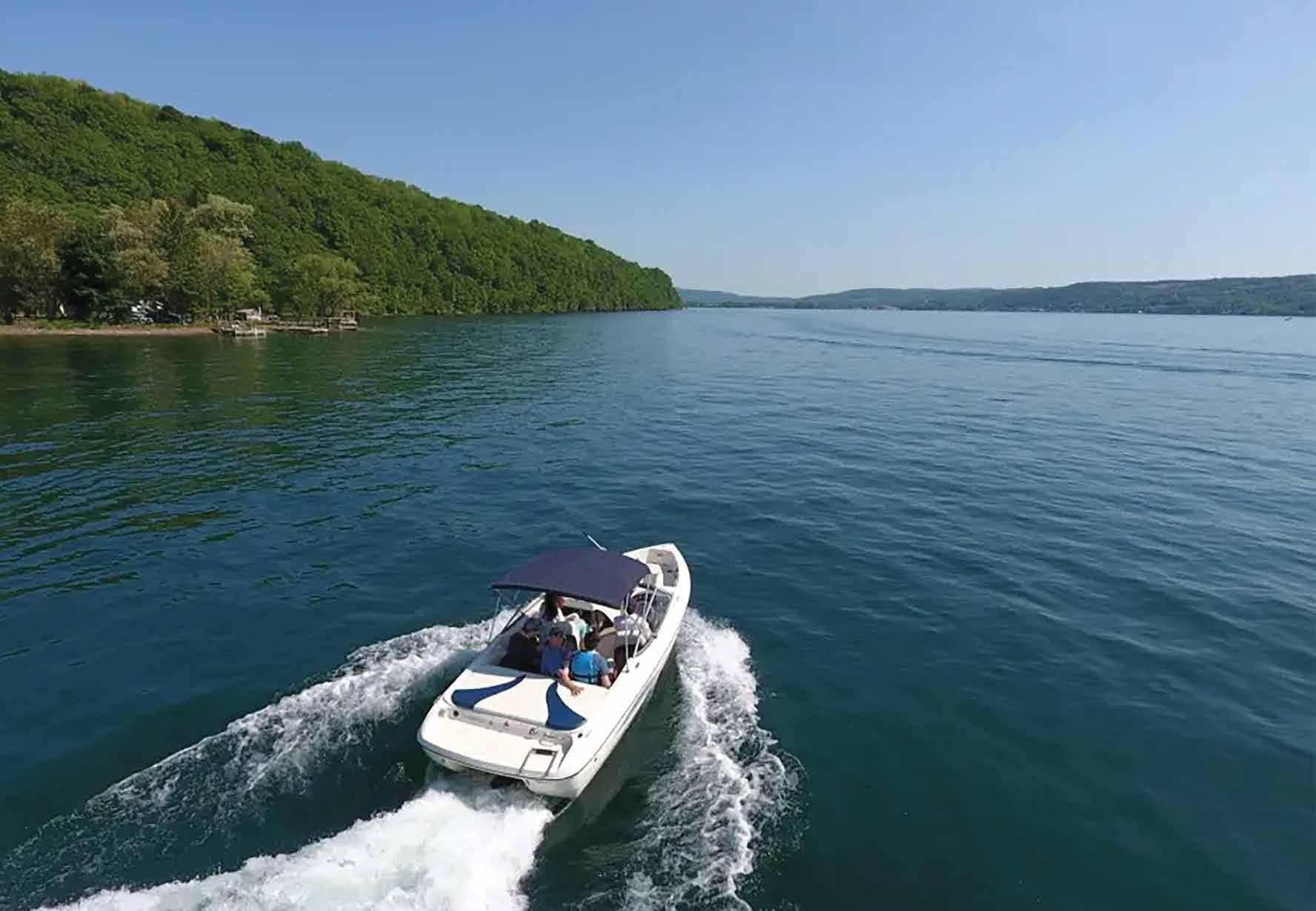
Boating on the Finger Lakes is truly an extraordinary experience, but boating on Seneca Lake is one of a kind. At 37.9 miles long and 1.8 miles wide, there is very little boat traffic. With a depth of more than 600 feet, there are no sand bars or rock formations, making it a joy to navigate.
You can see the east and west shorelines at all times, and there are no navigational waterway tributes branching off the lake, so it’s impossible to get lost. With that peace of mind, you can roam the lake in a sightseeing
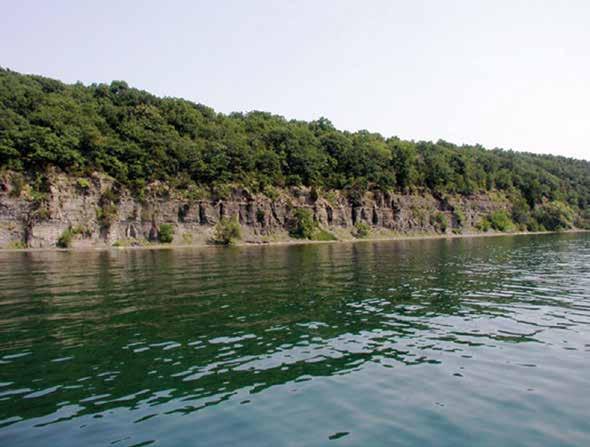
adventure. Kayak and boat rentals and gas are available on the water in Watkins Glen at Glen Marina and Anchors Inn & Marina.
There are many options to get on the water. Pedal boats, cruise ships and schooner tours board at Seneca Pier. Those who prefer a smaller, intimate boating experience can try a pontoon tour or a private boat and waterfall tour with Falling Waters Boat Tours.
There are numerous bald eagle nests along the southern end of the lake near Watkins Glen. Eaglets are born every spring, and you can watch them grow. Last spring, my boat tour guest and I watched a bald eagle fly into the lake, spear a fish with her talons, fly to the nest and feed her two hungry babies. What an incredible, unforgettable sighting! Eaglets start branching – jumping from the nest to nearby branches, building their wing muscles –when they’re around nine weeks old and fledge at 10 to 12 weeks. It is fascinating to watch the eagles’ activities every year.
Fishing is not just for eagles. There is nothing more relaxing than drifting
by Fred Grabosky

the boat while fishing for lake trout for which Seneca Lake is famous. In fact, Geneva proclaims itself as the lake trout capital of the world! Lake trout here can reach a length of nearly 3 feet and weigh up to 25 pounds. There is an annual lake trout fishing tournament in May; hundreds of fishermen compete for prize money for the largest lake trout. The lake is stocked with land locked salmon, lake trout and brown trout every spring.
Locals’ favorite things to do on a hot summer day is take the family
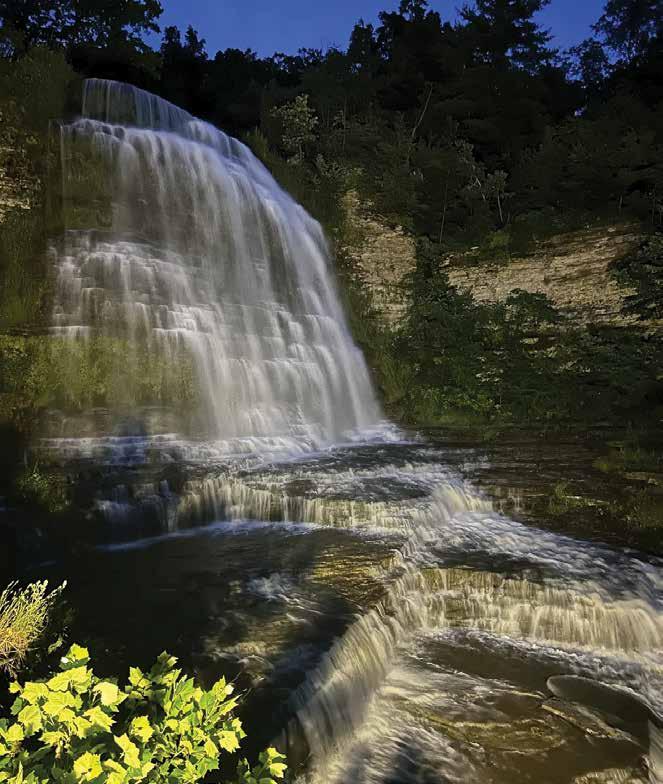
or friends out on the boat, find a quiet spot, anchor and go for a swim in the cool lake. The water is crystal clear with visibility over 20 feet deep. After a relaxing swim, cruise the lake to take in the vineyards cascading over the rolling hillside down to the lake. Over the last 15 years, there has been development of some magnificent multi-million-dollar private estates built on the cliffs over the lake that can only be viewed by boat.
After a day of fun in the sun exploring the lake by boat, dock at the marina in Watkins Glen where there are several good restaurant options from burgers to steak and seafood with local craft beer and award-winning Finger Lakes wines. Head back to the boat for a 10-minute ride to Hector Falls, cascading 250 feet down the sprawling hillside into Seneca Lake while watching the sunset light up the twilight sky.
Our home is paradise. Create yours this season with your own adventure on Seneca Lake, the largest body of water in the majestic Finger Lakes of New York.

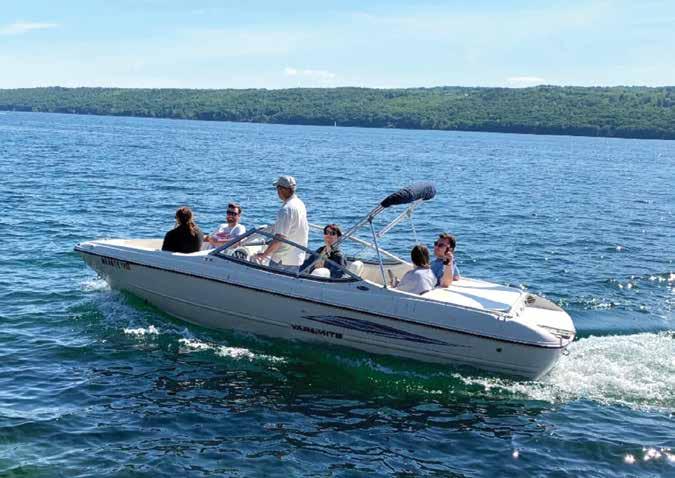




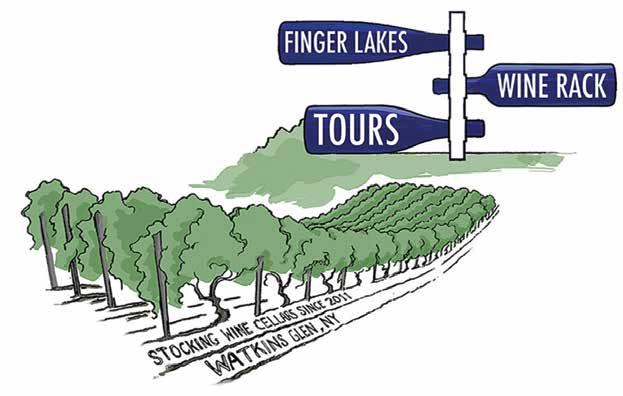
Located on Rt. 228, Odessa, NY Honoring Veterans Since 2006


Granite Bricks or Benches engraved with a Veteran’s name can be purchased for any honorably discharged Veteran $75 Brick - $1200 Bench
Forms available at visitors center or Schuyler County Veterans Service Agency
Pavillion, Picnic Area, BBQ Pit available with reservation Memorial Day Service every Memorial Day 11am Come check out this beautiful park! Questions? Call Clayton Snow 607-742-5565


by Terence Lane

When I asked my mother – who was raised in Watkins Glen – how many wineries there were on Seneca Lake when she was a kid in the 1960s and 1970s, her reply was simple: “None.”
Well, she was close. Actually, there were about two in the 60s, a number that would surge to a whopping five by the 70s following the New York Farm Winery Act of 1976, a game-changing piece of legislation that paved the way for grape growers to sell their wines directly to the public. Today, there are more than 60 wineries on Seneca Lake alone, and the number only seems to be rising.
With more and more visitors arriving every year, expectations for winery offerings are also increasing. Which ones have music? Which ones are dog friendly? Which ones allow bridal parties of 15? But the question most frequently
aired would have to be: Which ones have food?
For a region as vast the Finger Lakes, food offerings at wineries remain limited, but there are some places that are not to be missed.
The first that comes to mind is Ryan William Vineyard, situated on Seneca Lake’s eastern rim, a mere 10-minute drive from downtown Watkins Glen. Its brunch offerings range from French toast with fruit compote to kimchi fries and juicy grass-fed smash burgers. The French toast, consisting of freshly baked brioche, was both fluffy and rich.
For a second course, I opted for the breakfast sandwich special. Served on a large toasted English muffin, it was generously proportioned with high-quality cheddar cheese
and a blanket of folded scrambled egg. Not your average breakfast sammy, but also not so ambitious it forgot what it was supposed to be. Creative specials like spicy peanut wings were also available on my last visit, but stay tuned for updated options coming this summer.
Ryan William Vineyard’s creative and dynamic cuisine is served in an airy, elegant atmosphere. Outdoor dining is also available when the weather decides to play nice. From the patio, diners can enjoy a full meal with a sprawling view of the lake stretching off to the north and south.
The wines at Ryan William are first-class and tend to lean dry. From bubbly to white to red, there’s a perfect wine for every palate. The region is known for its fresh and fragrant red wines, but I was especially impressed by Ryan William’s powerful syrah.
Another highlight of the Ryan William location is its proximity to incredible wineries and breweries just a few minutes to the north. Beer lovers will find a sanctuary in Two Goats and Lucky Hare Brewing, both of which offer food. Babe’s Burger, on premise at Lucky Hare, has the most tantalizing pork butt fries I’ve ever tasted.
If you have the time to skip over to Keuka Lake, 25 west of Seneca, Bully Hill Vineyards in Hammondsport has been serving up food and wine for decades. Where Ryan William’s wines lean to the dry side, Bully Hill is lauded for its sweeter
wines. Its warm and cozy timber-frame restaurant calls out to those traveling the Keuka Lake wine trail. Floor-to-ceiling windows provide a scenic view of Keuka Lake, and light permeates the entire space.
The dining style is explained on arrival. Customers place their orders, pay in advance and the food is delivered to their designated table. Straight-forward menu options range from salads to soups to sandwiches, and the service is snappy.
I enjoyed the crispy pickle dill wrap, filled with handbreaded chicken, lettuce, tomato and a tangy pickle ranch dressing bundled up in a flour tortilla. Side options include onion rings, French fries, coleslaw, salt potatoes and salad. It really is the perfect place to quickly recharge before the second-half of winery adventures to come.
Many wineries in the area do not boast a traditional restaurant-style menu but offer a variety of pre-packaged bites and nibbles, often enough to pass for a meal. Wineries such as Hector Wine Company (a few miles north of Ryan William) provide a veritable pantry of locally sourced meats, cheeses and pickles in a well-stocked refrigerator. Plates and cutlery are on hand to enjoy a meat and cheese selection alongside a flight of wine.
This style of snackery is increasingly popular at wineries operating without a commercial kitchen. And while it isn’t the same as a smash burger or a plate of just-baked brioche French toast, I, for one, find it’s often enough to do the trick, and more than enough to cut the mustard. Cheers!
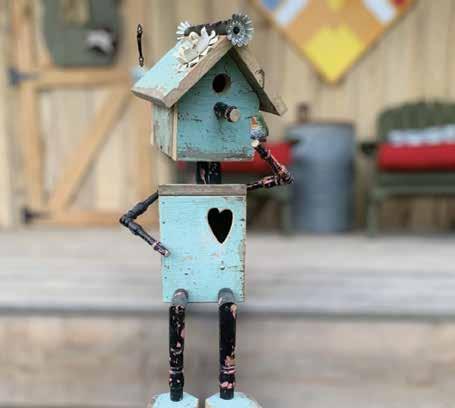


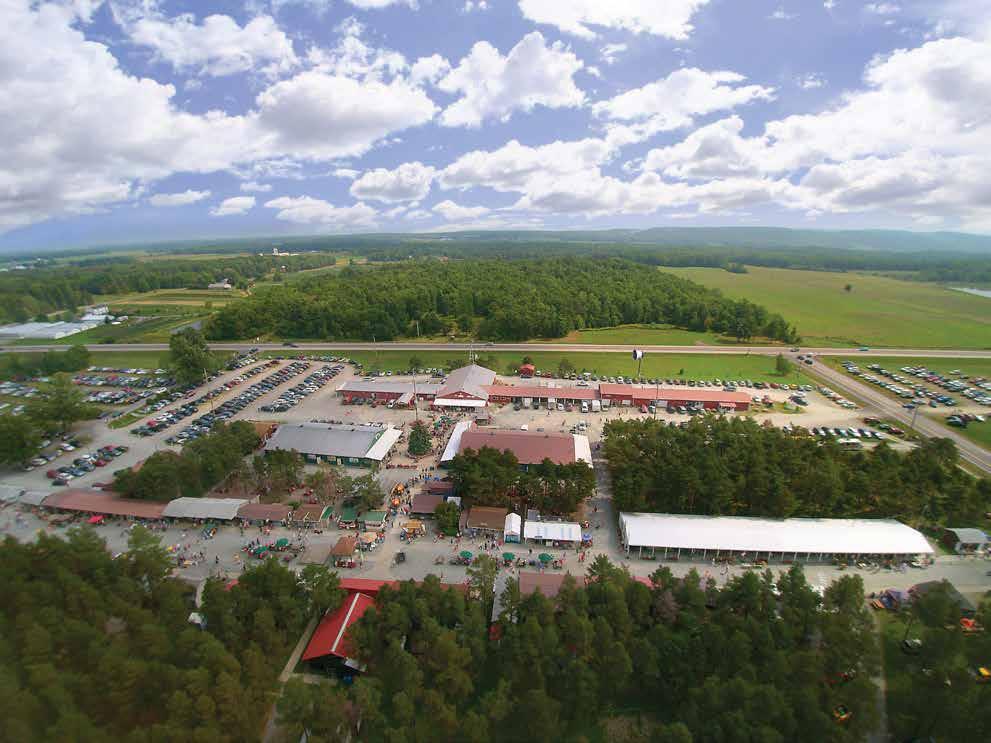
our market to you.



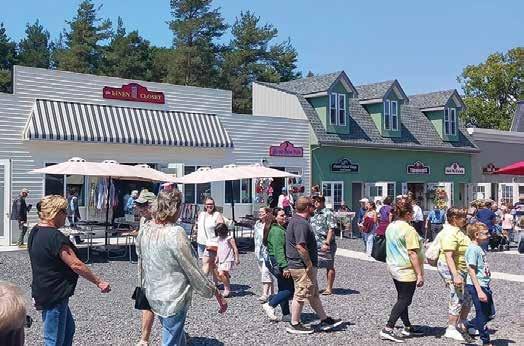
by Kate Fuller, CareFirstNY
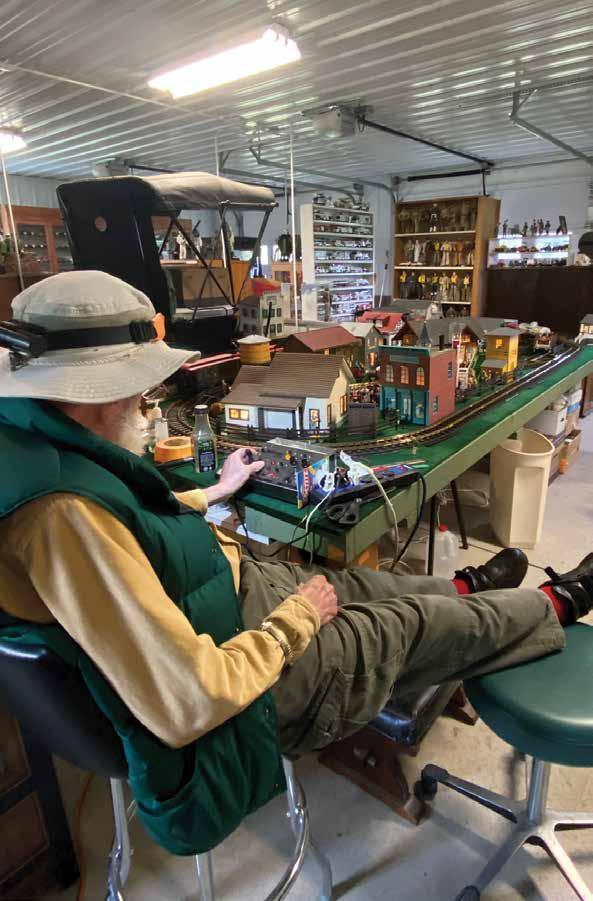
In the heart of the Canisteo Valley, in a small museum behind his home, Dr. Spencer Annabel could often be found hunched over a miniature world of his own making. Rows of model trains curved around a small town he’d built and shaped, featuring townspeople moving about their daily tasks. He didn’t move as quickly as he once had. But even as his body slowed, his mind remained in motion – tuning locomotives, laying track and building stories.
Dr. Annabel was many things: a husband, a father, a grandfather. He was also a respected local physician, well known in this region for his compassion and steady presence. In the final chapter of his life, however, he took on another role – that of a hospice patient. For nearly three years, Dr. Annabel received care through
CareFirstNY, an experience that, in his own words, allowed him to live “with meaning, not just time.”
To many, hospice care feels like a final word. For Dr. Annabel, it became a quiet promise: that the days he had left could be shaped not by decline, but by purpose.
Dr. Annabel’s life was always deeply tied to service. As a physician, he treated generations of families with a kind of rooted wisdom that only comes from years spent in the same small towns. Patients remembered him not just for his medical knowledge, but for the way he listened and treated people like whole human beings, not just symptoms to fix.
So when, upon a Stage IV lung cancer diagnosis, his own health began to decline, Dr. Annabel didn’t retreat from life. He instead chose to embrace it more intentionally. With the support of his hospice care team of nurses, social workers and spiritual care counselors, he was able to remain in his home, surrounded by family, creativity and the quiet rhythms of a life well lived.
“His care team became our friends,” shared Carol, his loving wife of 53 years. “CareFirstNY is a good support system, and it helped knowing you weren’t alone.”
Hospice can – and often should – begin earlier than many realize. Dr. Annabel’s nearly three-year journey under CareFirstNY’s care is a testament to what’s possible when support is introduced not at the very end, but in time to truly make a difference.
His care team helped manage
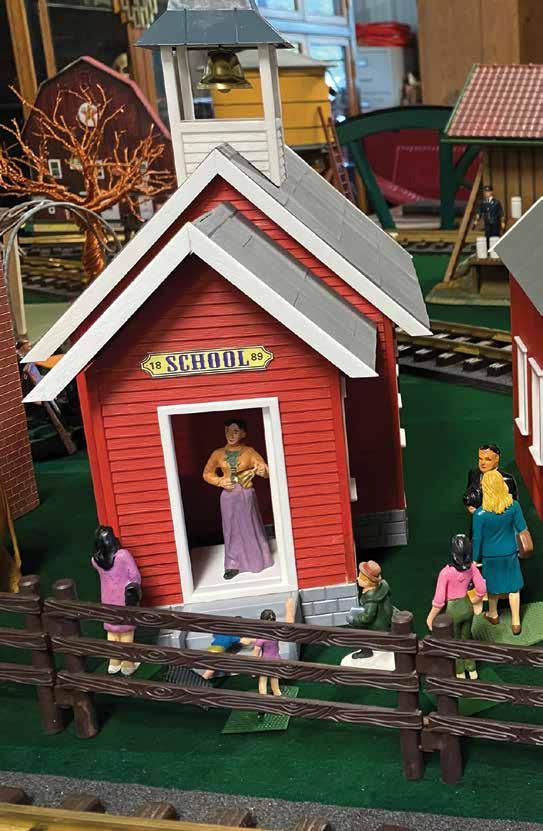
symptoms and medications, but they also preserved his autonomy and daily joys. Because of that, he was able to return to his workbench; continue his lifelong passion for Civil War dioramas, model trains, cars and planes; and, perhaps most meaningfully, write.
Dr. Annabel’s greatest fear was that all the knowledge and experience he’d gained would be lost when he died. So, he crafted a memoir filled with stories from his childhood, his years in medical school and decades of caring for people in small communities. It wasn’t written for acclaim, but as a legacy for his children and grandchildren. That book, “A Physician’s Journey,” now published and available on Amazon, became a final gift.
Dr. Annabel’s story reminds us that hospice care is not about surrendering life. It’s about reclaiming it.
In the safety net of hospice, Dr. Annabel found the space to do what mattered most. He wasn’t rushed through his final chapter. He was allowed to live it fully. Whether it was sharing laughter with his grandchildren, quietly editing a chapter of his book or working on the fine detailing of a model in his museum, his days were filled with intention.
CareFirstNY’s role in Dr. Annabel’s story was never about taking over, but standing alongside. Through personalized care and presence, it helped create room for dignity,
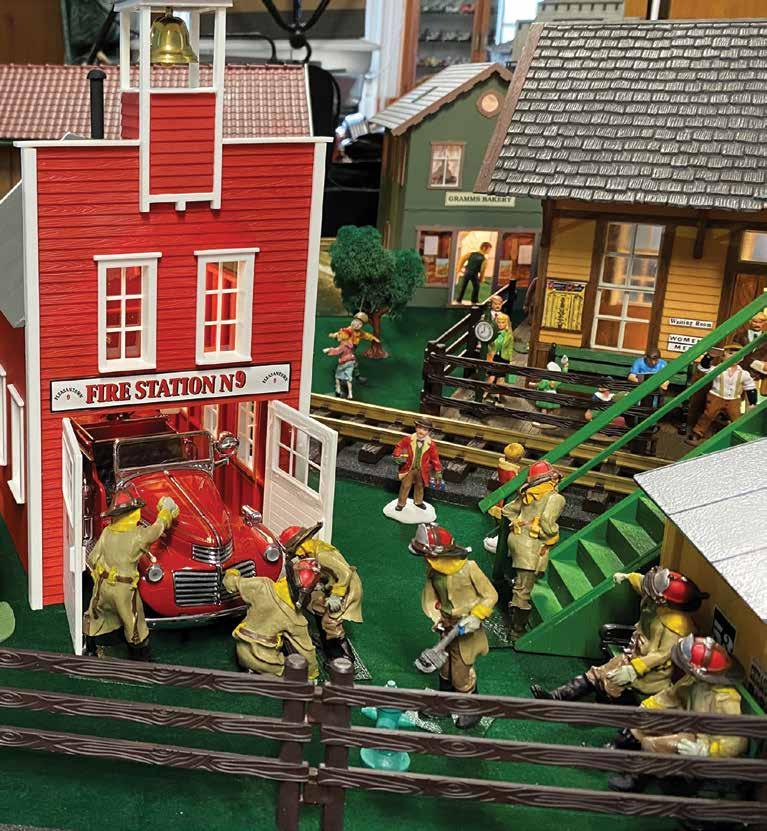
creativity and connection.
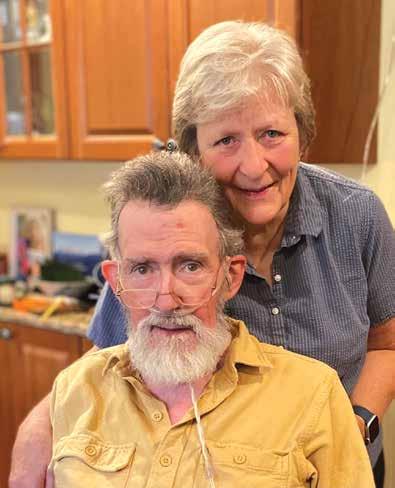
“Dr. Annabel loved to share knowledge with others, and his passion for life and experience is not something I will soon forget,” shared Katelyn Clawson, a CareFirstNY social worker and member of his care team. “He showed us all what it was like to truly live life on hospice and to never give up on the things that bring you joy.”
Dr. Annabel passed on March 22, 2025 in his home, not far from his beloved collections and model trains, with his family nearby and a copy of his newly printed memoir resting beside him.
Dr. Spencer Annabel’s story reminds us that legacy isn’t something we leave behind by accident – it’s something we build with care. For those navigating aging, illness or caregiving in Schuyler County, his journey offers not just a memory, but a map. It’s a testament to how hospice care, when embraced with intention, can make room for meaning and love, even in life’s final stretch.
And perhaps that’s what it truly means to live your dream: not just by chasing it in youth, but by laying down tracks of love, purpose and presence that others can follow. In the end, the life we live becomes the legacy we leave, and the tracks we leave behind tell the story of who we were and what we valued, right to the very last stop.
This piece was written in loving memory of Dr. Spencer P. Annabel. We thank his family for allowing CareFirstNY to be a part of his final journey and for allowing us to share his story with the community.

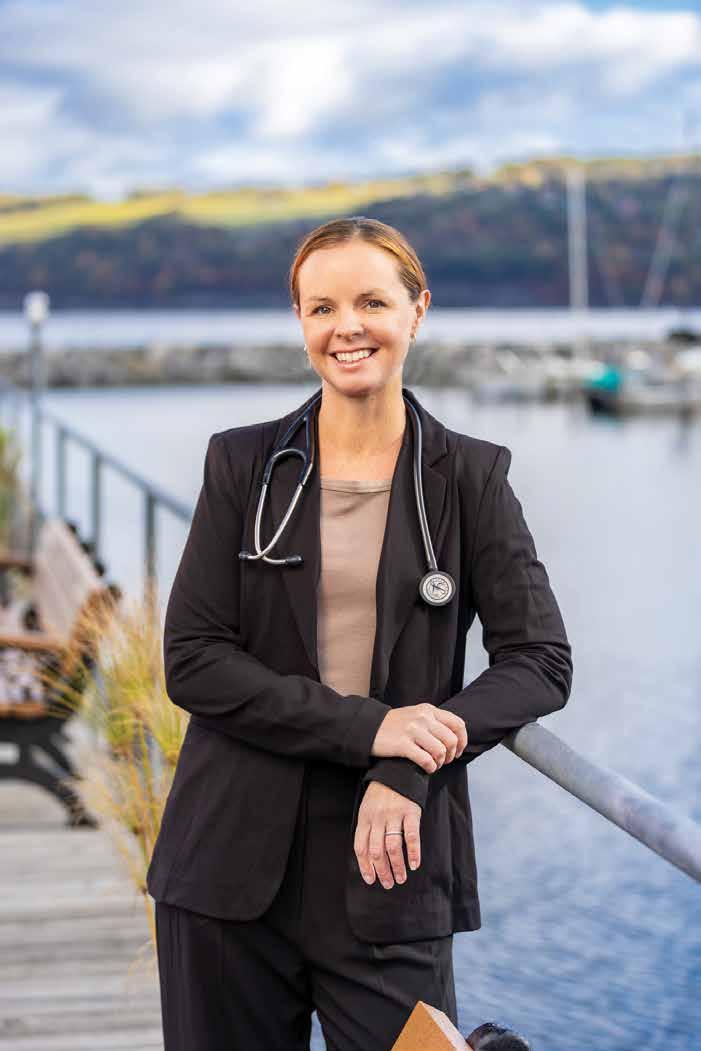

We know that asking for help isn't always easy. That’s why our hospice care is built around you— preserving dignity, supporting families, and providing comfort on your terms. Whether it's pain relief, a listening ear, or a peaceful presence, we’re here to support you.
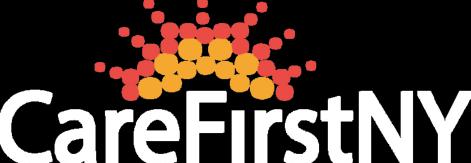

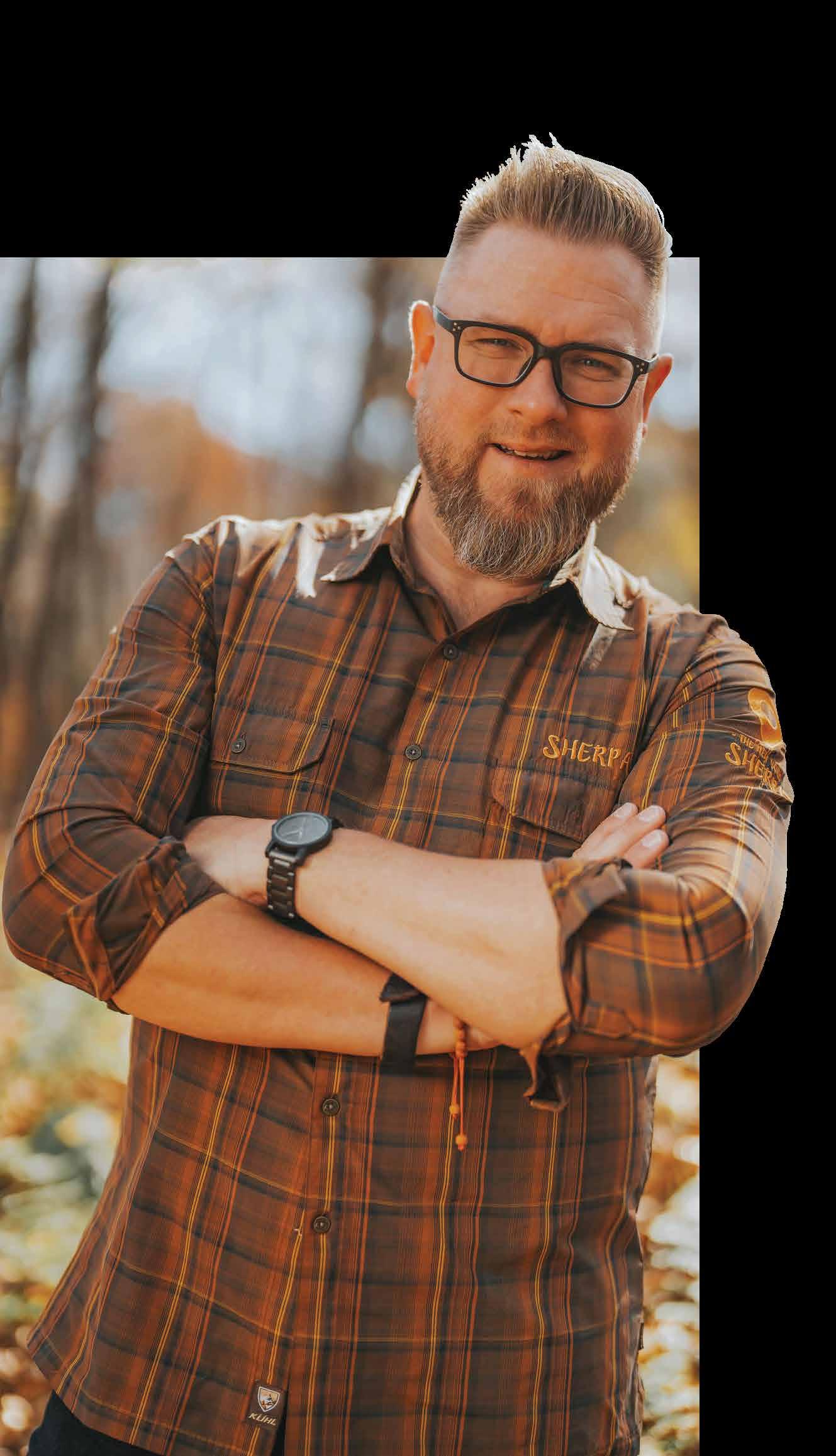
villages dotted across the farming landscape. We’ve got every night booked for little pubs, the ones where the locals drink.” You can almost taste that beer as they imagine their plans live in front of you.
It’s about then I admittedly set them up a little.
“Tourism season is almost starting for us as well!” I say. The light disappears from their eyes, and the energy drops. “Yeah, that’s right, there’s about to be tourists in our…”
“Pubs,” I say with a smile.
It’s my attempt to start the connection of a problem with how we view the visitor economy in our town. Or as most people call it “tourism season.” When we leave our town, we are just curious and adventurous travelers seeing the world. However, when visitors show up on our doorstep, now they are extracting and taking? How did we get here?
My work has continually grown into helping destinations, and the residents of those destinations, see that tourism is more of a force for good than they think. I also build the conversations and relationships to be sure that we are managing visitation for the “triple win.” That means that the visitor wins, the resident wins and ultimately our community’s future wins.
We have gone through a generational shift in how communities will experience vibrancy and success. It is linked to the age-old idea of how well you are retaining your youth as future residents and investors.
by Josiah Brown
Sometimes there are a lot of tourists in our towns. But let me tell you, tourism and people that steward the tourism industry in your town might just be the linchpin to your community’s vibrancy and success in the future. Let me explain.
I laugh at a particular conversation arc I encounter quite often. See if it sounds familiar: I start to chat with a neighbor or community member and I ask what their travel plans are. They light right up with new energy, eyes wide and full of zest, as they start to dream out loud.
“We’re going to Ireland this year! Not just the cities –we’re going to rent a car and go off the beaten path. We’ll visit little towns to see the culture and the people in the
You probably grew up in a town built on a mix of employment – including industry and agriculture, plus the retail and service jobs needed by the residents. In those days, the weekend visitors to your attractions and restaurants may have been a slight source of frustration. “I can’t get around my town as easily when visitors are here. Could we do without them?” That was a natural thought. Heck, with a NASCAR track in the backyard there are a few “Black-Friday-at-the-mall” kind of traffic weekends.
But in more destinations than I care to count, the foundation of industry and agriculture slowly started slipped away. It happened almost so quietly that people didn’t notice until it hit hard – in some places, really hard. Naturally, retail and services started to suffer as well because of a shrinking economy. Downtowns started to lose storefronts, restaurants fell to chains, you get the idea. Once we started to lose the vibrancy of our communities, we started to lose our greatest resource, which is the young
families and the young investors in our communities.
Another generational trend was thankfully starting as far as Upstate and Western NY were concerned. Younger demographics, beginning with the Millennials, started traveling more, spending more of their disposable income on travel experiences, and even taking jobs that gave them more travel freedom. This became such a trend it influenced Gen X to travel more and eventually even younger Baby Boomers, too. Gen Z was just born into thinking this way. Mix in the remote-work-era, and now a new thought process in these younger demographics was established.
The next generations have seen so many destinations by the time they reached the “settling down” life stage, it forever impacted their desires of where to live. Younger generations want to live in communities that have the experiential vibe of destinations they have visited. This is what I call the “Avocado Toast Index.” If you show me how many places sell avocado toast in your destination, I’ll show you how attractive it is for young professionals and families to live there.
Tourists fund the type of “quality of place” assets like cafés, restaurants, attractions, retail, etc. that young people want to live around. Well-managed tourism equals community vibrancy. And yes, I did say “well-managed.” We aren’t advocating for tourists overrunning anything. We all (continued on page 28)
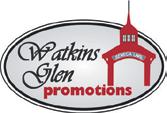

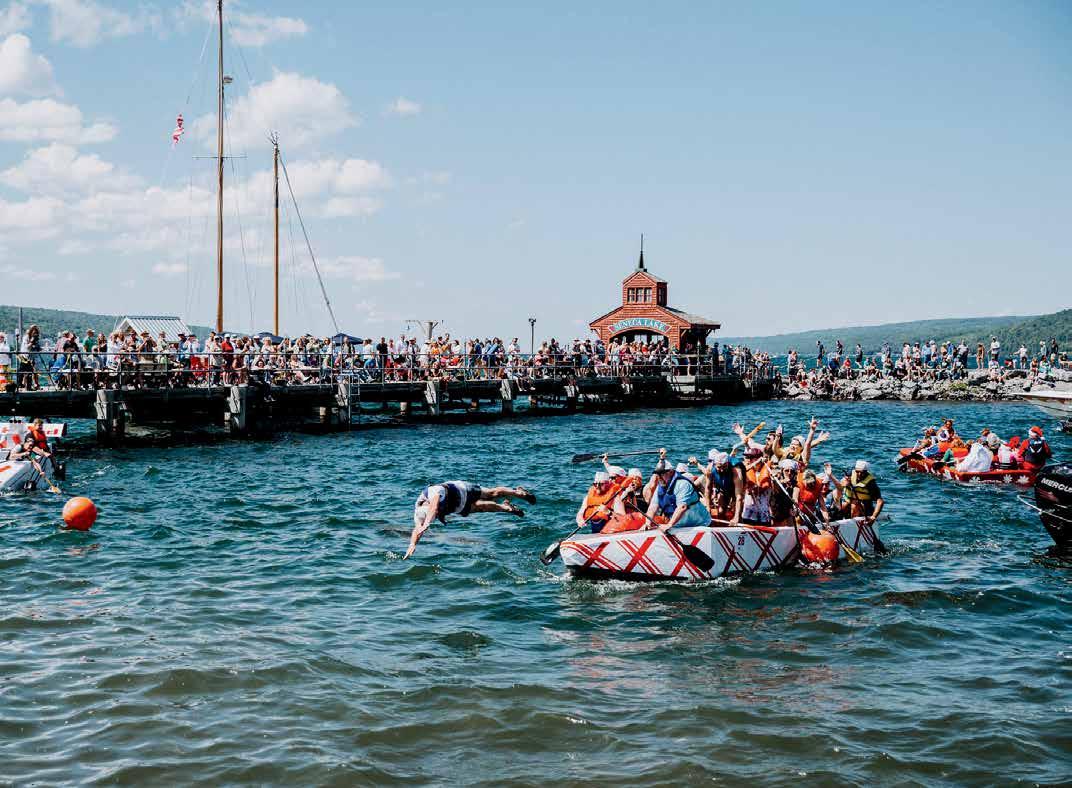



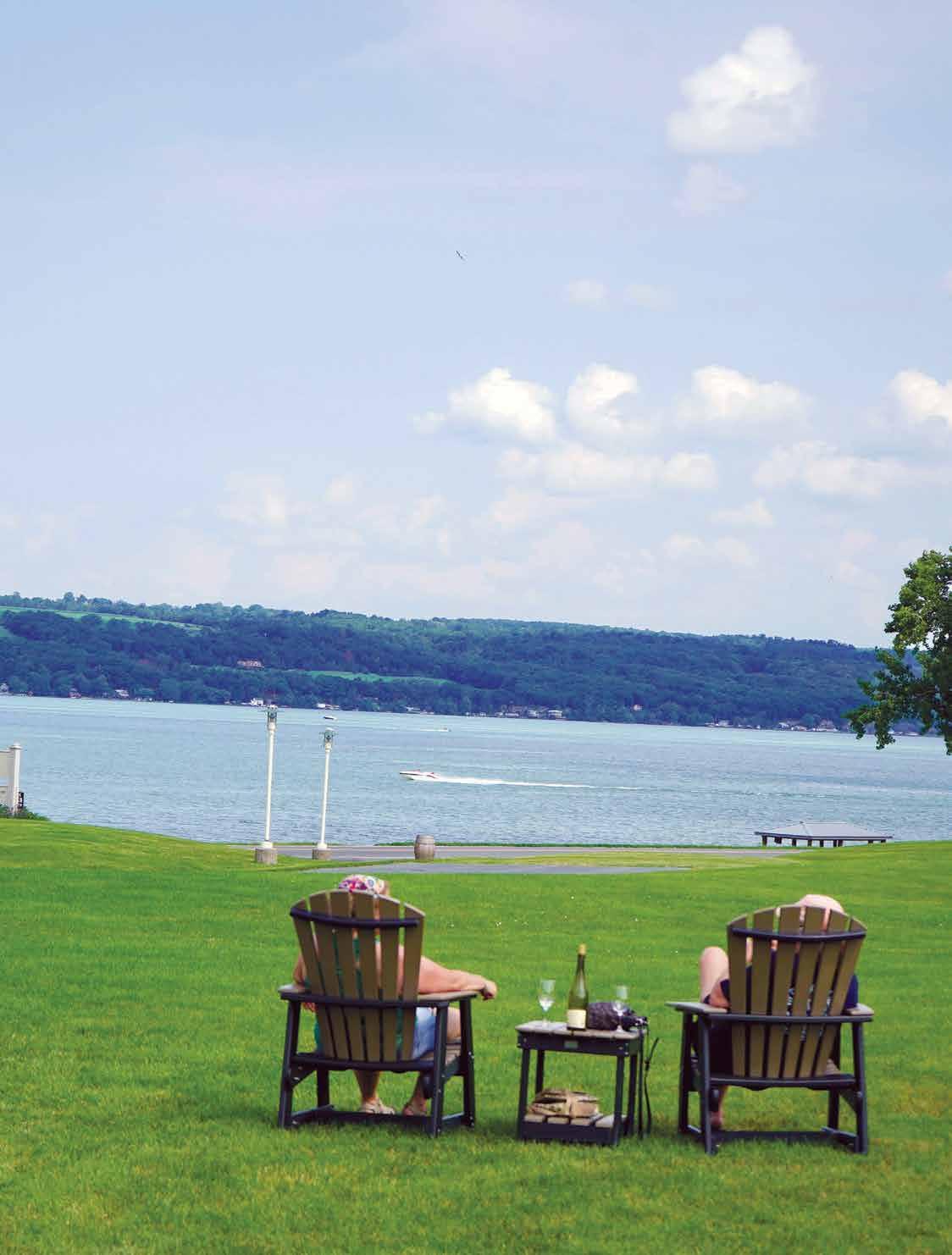

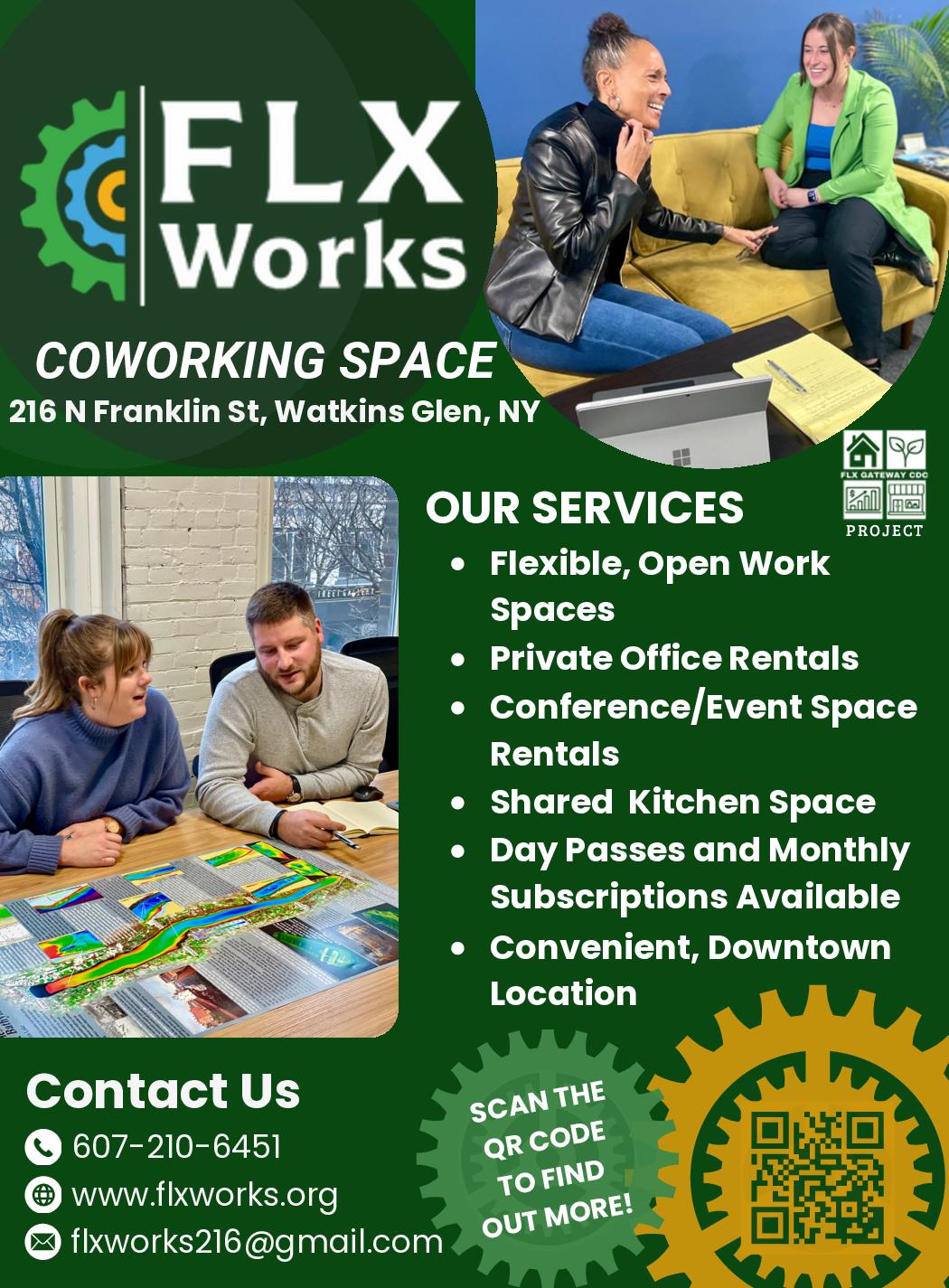
see news stories of European towns that have some tipping point that has been crossed, and that’s not what anyone wants. (Although I could show you how those are often overblown stories.)
When the summer hits, the Finger Lakes are popping with activity, the race car engines start revving and the gorge trails get full. That is a part of a necessary tradeoff for living in attractive places all year.
Today, many towns on the decline are seeing a renewed spirit and life through a growing visitor economy. I use the term “visitor economy” intentionally because tourism’s impact is seen far beyond just the businesses taking the visitors’ dollar. Those businesses we call the “tourism businesses.” A “visitor economy” considers the full impact from grocery stores to gas stations, cleaning companies to contractors, marketing companies to insurance companies, and on and on.
Over the last 15 years, New York State has become a success story of growing the visitor economy. Tourism has gone from the sixth largest industry to now the second largest industry in the state. This has been built on the successful work at state, regional, county and community levels by hundreds of proactive marketers, managers and stewards of the idea of building sustainable tourism models to deliver community vibrancy and future hope.
If you don’t have a destination that a young person wants to visit, you don’t have a destination that a young person wants to live in. But the inverse is true as well, and therein lies the opportunity.
So yes, we welcome visitors, take the visitors’ dollar in season and let that make our small business success, beautification, job base and entry level and career level hospitality opportunities grow. We all become more successful because of it.
Maybe your kids will be able to walk up the block for Thanksgiving with the grandkids instead of having to fight airlines. And maybe, just maybe, you have that tourist in your favorite pub, hopefully a race fan, to thank for that.
Tourism is a force for good.
Josiah Brown is the New York Sherpa. Learn more at newyorksherpa.com.
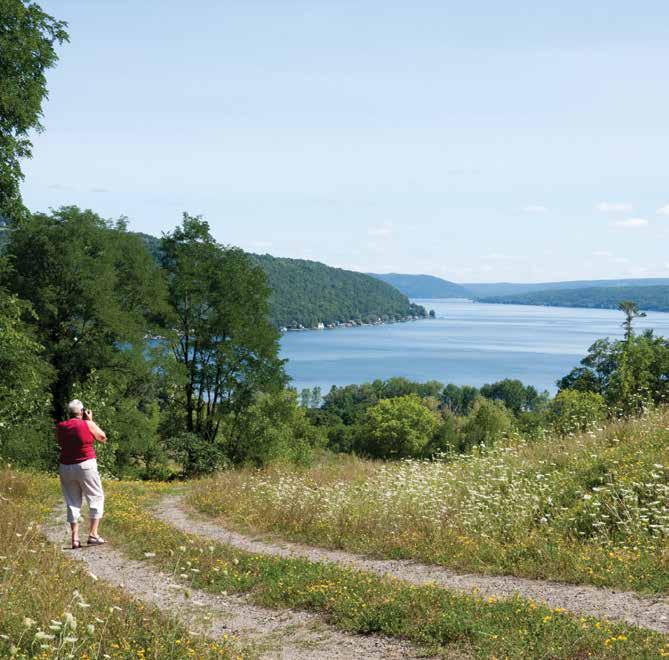
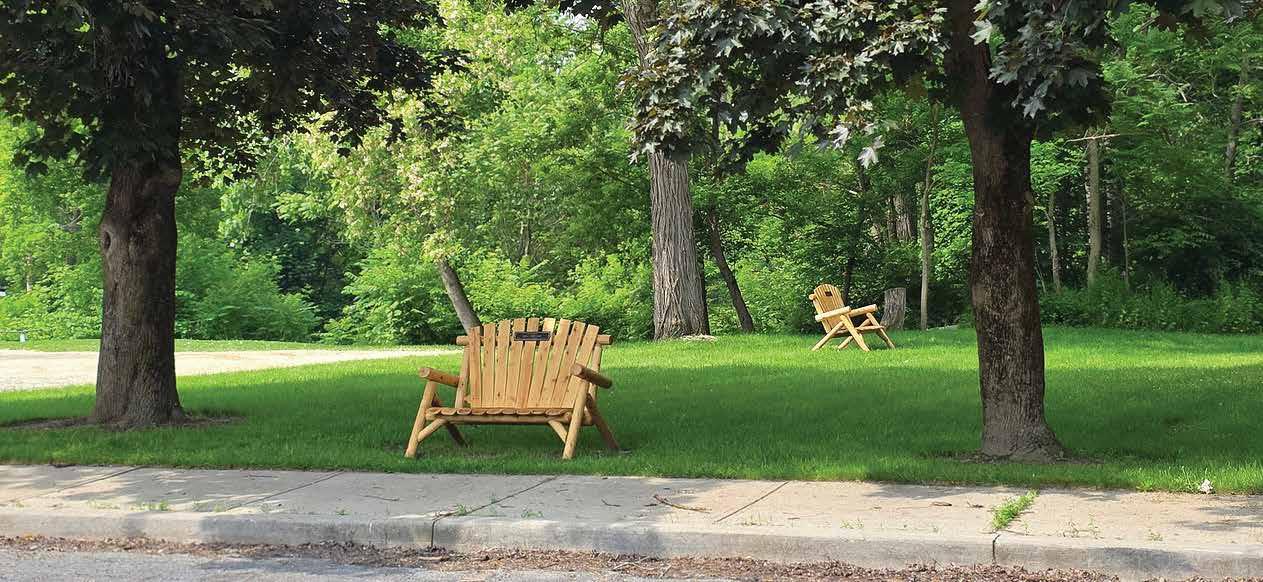
After being a bustling village in the 19th and early 20th century, Burdett is busy again. Many would say the best is still to come.
When it got its first post office in 1819, a young resident named the village after a British reformer. Burdett became a hub of manufacturing and retail activity for more than a century, when farm families came to trade and shop. After the Leigh Valley Railroad established a stop in Burdett, farmers and others prospered with the opportunity to send produce to wider markets.
The village got quieter in the 20th century. After the railroad left, children went to school in Watkins Glen and storefronts emptied. Eventually, some of the people who were raised here returned. They were joined by others who were drawn by the area’s beauty, real estate they could afford, active churches and a chance to express their creative, entrepreneurial spirit.
Perhaps the most venerable Burdett business is the H&E Bar, owned by Cody Gregory who purchased it from long-time friend Adam Thorpe a few years ago. “It’s a staple in the community,” said Gregory. “It’s been around for decades, and the bar was something we felt should stay alive.” The cozy vibes of a well-loved watering place say it all.
Farm-to-table cuisine can be enjoyed at the Hungry Burd, at 3815 Main Street, appreciated year-round
(continued on page 30)
by Karey Soloman
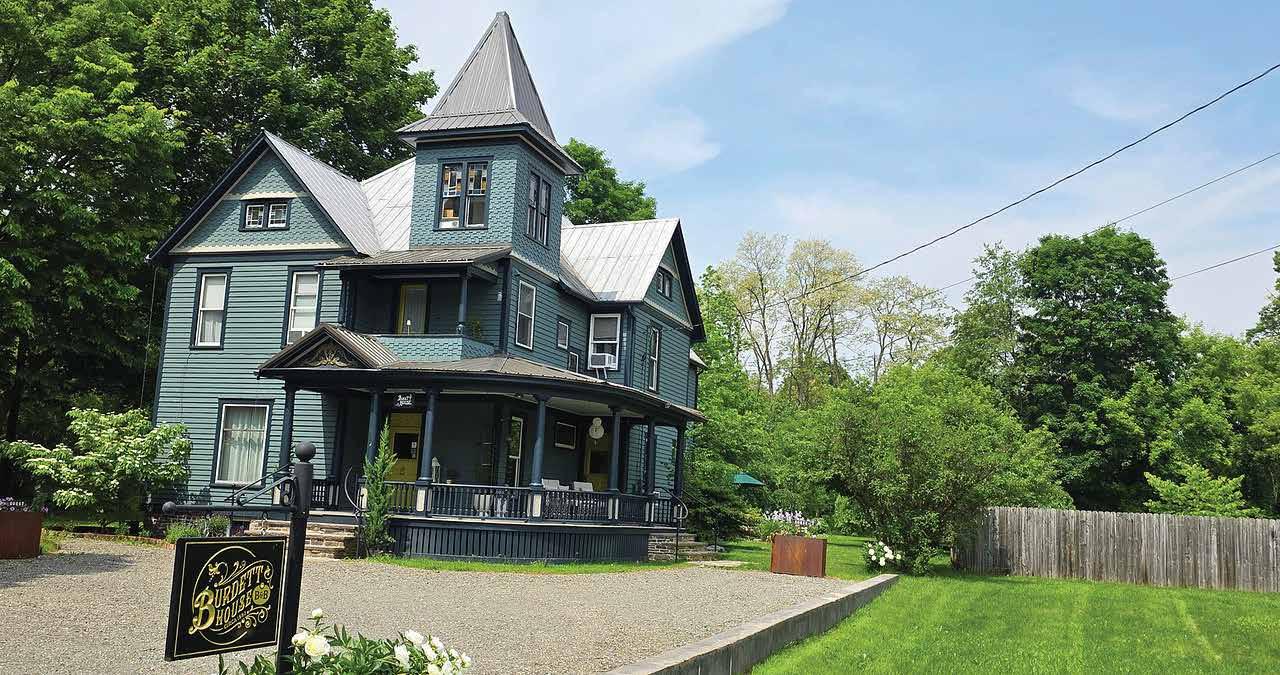
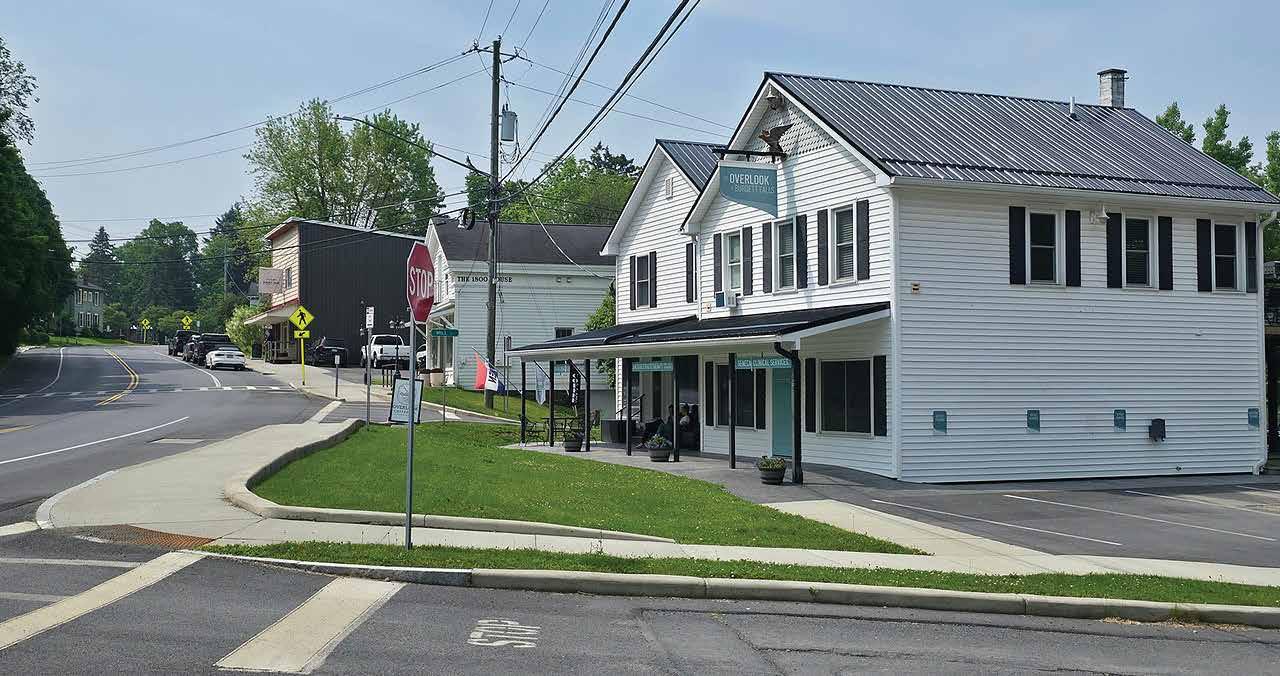
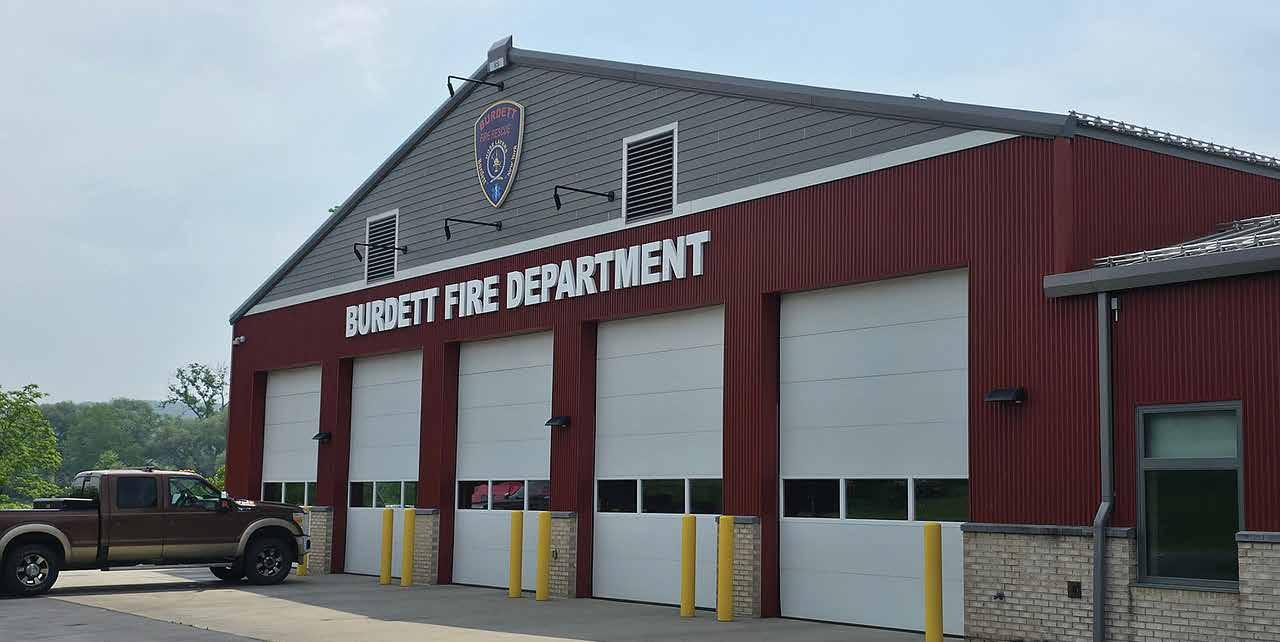
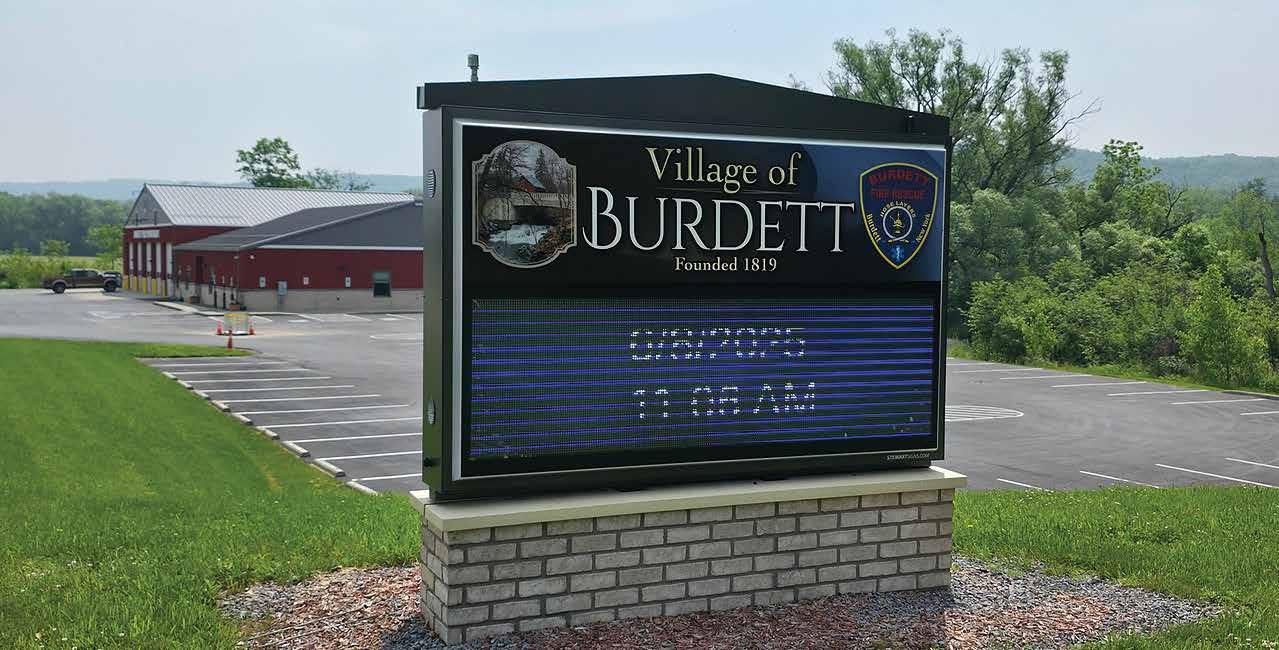
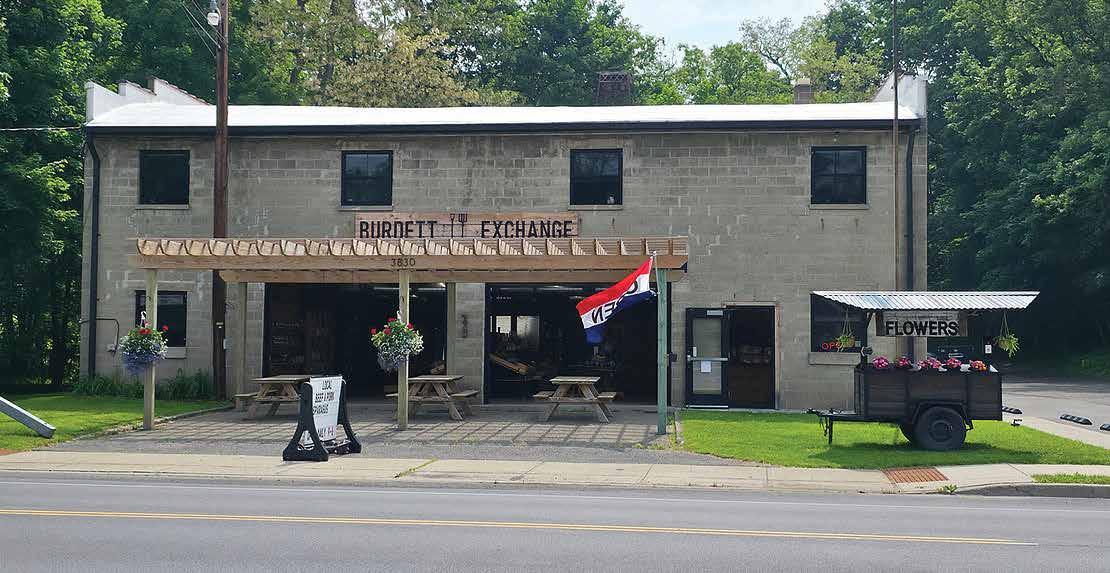
by locals as well as seasonal visitors. Owned by Brianna and Joe Colunio, Hungry Burd serves dinners and weekend breakfasts and lunches. The idea to open the eatery came when Brianna, who’d previously worked at an earlier restaurant, Smokin’ Bones, couldn’t bear to see her village lose a much-appreciated gathering place.
Next door is the 1800 House, owned by Sarah and Colin Davis. They launched it as an event space last year, with an upstairs apartment available as an add-on. “When we bought the space, people thought we were crazy,” Sarah said. “But this is a beautiful historic building with a lot of potential.”
Down the street, in a building that formerly housed the Burdett Fire Company, is the Burdett Exchange Meat and Mercantile, which offers locally grown produce, pasture-raised meats and artisanal handmade wares. Tempting produce and an array of hanging flower baskets are displayed outside during open hours. Owned by Johnathan and Lindsey Wasson,

Johnathan is credited as a mentor by other business owners.
The Overlook Building, across the street to the south, houses an Airbnb, two health practitioners and a busy coffee shop. The building is owned and was renovated by Adam and Brittany Thorpe. Brittany persuaded her brother, Brandon Evans, an aerospace engineer who began experimenting with coffee-roasting during the pandemic, to turn his hobby into a business. They discovered a neighbor, Joel Kircher, is an expert doughnut maker and baker, so the products of his talents are also available here.
Other passion projects can be found through the village, like the seasonal berries, honey and baked goods at Mangus Farm at 3710 Main Street. The business grew from a roadside stand to a renovated barn with picnic tables outside, and forks offered to customers who can’t wait to sample the pies. Look for a signage streetside announcing what’s in season.
In the heart of Burdett, there’s
the Burdett House B&B. There, hosts Ashley and David Jones pamper guests in an elegant 1880s Victorian house that’s one of the prettiest in the village.
At the village’s eastern end is Mindful Inspirations on Lake Street. Here, Lisa Rahilly offers metaphysical instruction and practice including reiki, tarot, psychic readings, meditation and other modalities. Her storefront is a gift shop that offers crystals and other neat items and attracts customers from around the region.
Near the east edge of the village is the Burdett Dandy Mart which provides gas, pizza, grab-and-go deli foods, grocery staples and an ATM. A little further on is the fire station and community hall, a hub of community activities and a source of help for neighbors in need.
What’s next in Burdett? The renaissance is on a roll, incubating more ideas worth discovering in this creative blend of rural and village life.
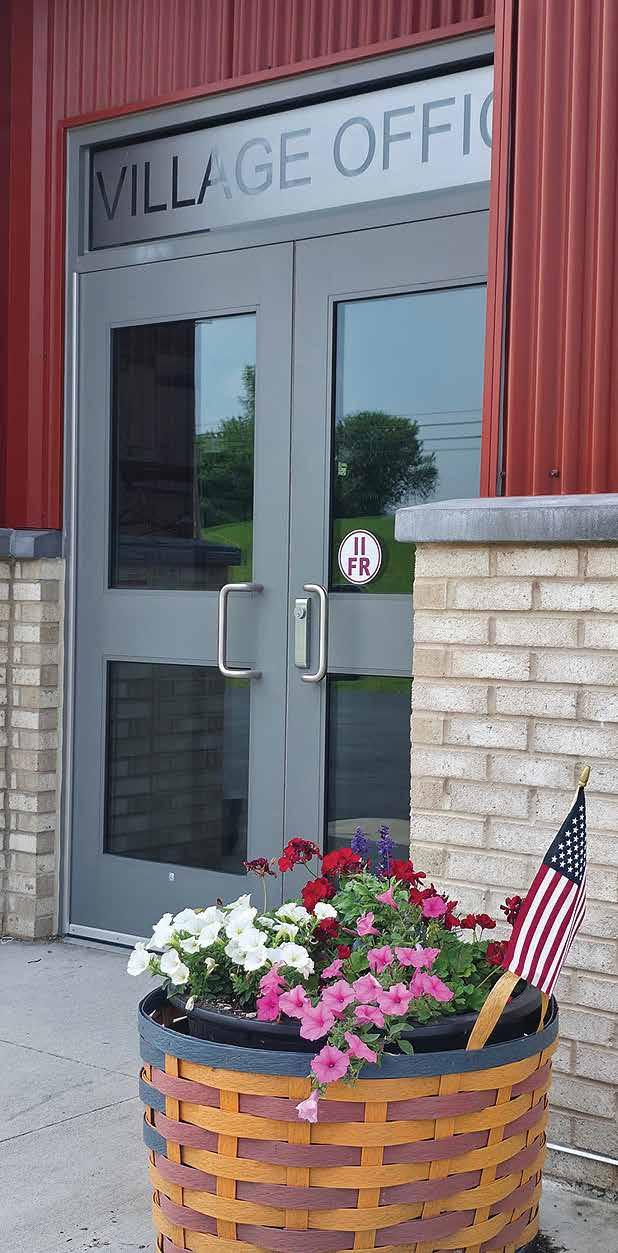





by Heather O’Grady-Evans Executive Director, Schuyler County Historical Society
In2021, the Schuyler County Historical Society took control of the Lawrence Chapel on Cayuta Lake. This place holds special memories for so many residents married in this quaint chapel. The Schuyler County Historical Society worked for two years to place the chapel on the State and National Registry of Historic Places. The hard work paid off, and the Lawrence Chapel was added to the State and National Registry of Historic Places in February 2025.
The Lawrence family’s history is integral to how we perceive and view the area of Cayuta Lake today. Jonathan Lawrence was born on Long Island in 1737, living in pursuit of life, liberty and happiness. He fought in the Revolutionary War as a brigade major under General Nathan Woodhull. He was a member of the 1776 Provincial Congress and participated in the convention that established the first New York State constitution in 1777. Jonathan also represented the Southern District of New York State in the Senate from 1777 to 1783.
In 1794, Jonathan was one of the five New York City associates of John W. Watkins and Royal W. Flint who successfully applied to purchase approximately 353,000 acres, including the Cayuta Lake area and much of what would later become Schuyler County. This tract of land became known as the Watkins-Flint Purchase. Jonathan’s portion comprised roughly 12,000 acres surrounding Cayuta Lake and the town of Catharine.


Jonathan married twice. His second wife, Ruth Riker, and he had 10 children. Johnathan died on September 1, 1812, having never visited the upstate property he purchased. Three
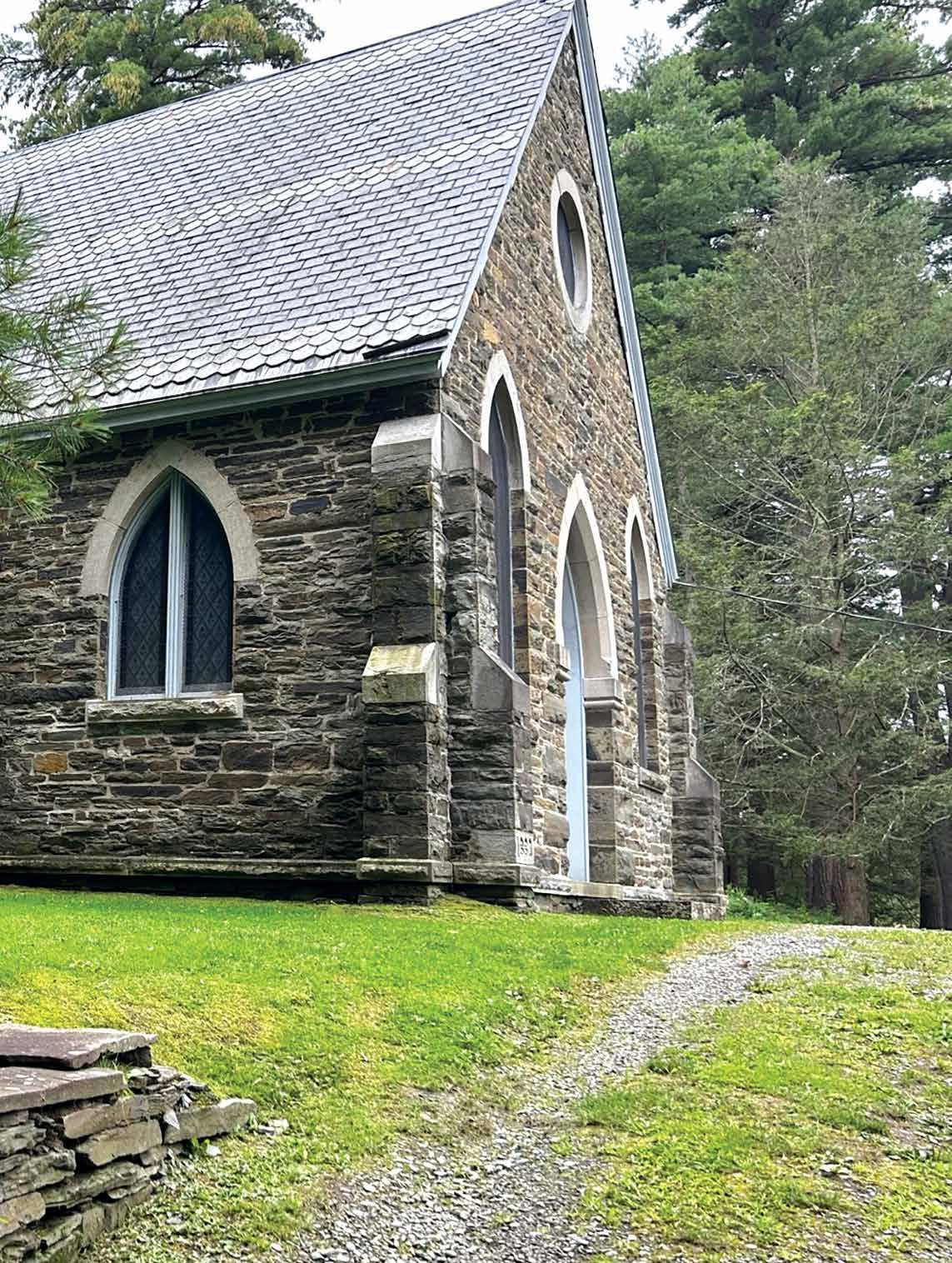
of his sons, Samuel, Joseph and William, inherited the Cayuta property.
Samuel Lawrence, the oldest child, was born in 1773. He was a lawyer, marine court judge, state assemblyman, city clerk, registrar, presidential elector and a U.S. congressman. In 1799, Samuel was the first Lawrence to see and explore his father’s land and the Cayuta Lake area.
In 1802, Samuel married Elizabeth Diver Ireland and they had 10 children. They are Cornelia Ruth, Jonathan, Samuel, John Ireland, Richard, Judith Margaret, Abraham, Henrietta Lousia, Jane and William Horatio.
Samuel and his brother Joseph both hired Samuel Winton to build their homes. David Beardsley and Elijah Hinman helped with the construction. Samuel’s house was called the Lawrence Homestead. In his will, Samuel Lawrence left the Cayuta Lake Homestead to his youngest living son, Abraham, and his youngest daughter, Jane.
Jane Lawrence was born in 1822 and married Adam G. Campbell in 1868, at St. John’s Church in Catharine. They had no children, but Adam had six children with his first wife, Ursula Catlin.
Abraham Lawrence wanted a mortuary chapel to be built on the Lawrence Homestead property, next to the cemetery where his parents and other members of their family were buried. He left a sum of money to pay for the construction. Other family members also assisted in paying for the chapel’s construction.
Jane Lawrence Campbell built the chapel, and the cornerstone was laid in August 1880. The first use of the chapel took place in July 1881. Jane died in 1891 and left the estate to her niece, Henrietta Richardson Butler, the
granddaughter of Samuel and Elizabeth Lawrence. She and her husband use the homestead as their summer home, and Henrietta cared for the chapel the rest of her life. She was the last Lawrence descendant to live at the Lawrence Homestead.
In 1929, the homestead was sold to Arne and Ruth Erikson. They modernized and expanded the house and property, changing the name to Fontainebleau Inn. Although owned by a different family since 1990, the name remains, and the property is a wedding venue.
The Lawrence Chapel is a single-story, Gothic Revivalstyle structure. The chapel is 30 feet wide and 60 feet long. The walls are 21 inches thick and made of mortared fieldstone quarried from the Lawrence family lands. The pilasters at each corner of the building are also fieldstone with accents in a lighter-colored stone. Each pilaster is 18 inches wide and 12 feet tall. The gable roof is made of variegated slate, and six rows are rounded on one edge, creating a clamshell design.
The nine Gothic-style windows are made of leaded glass with small flowered patterns and edged stained glass. The main door also has a Gothic shape. There is a circular rose window above the door and a simple stone cross on the roof.
The chapel has a vaulted, beamed ceiling, creating a warm, invitingly open space with simple pews. The front altar is slightly raised and has a communion rail and pulpit. The altar and pulpit match with carved religious motifs on both.
The space has beautiful acoustics and does not require amplification for weddings, vow renewals or even small, intimate music concerts.

The Chapel is available for use from May 1 through Oct. 15. Occupancy is limited to 120. For more information about Lawrence Chapel or to place in inquiry, visit the Schuyler County Historical Society’s webpage at schuylerhistory.org.
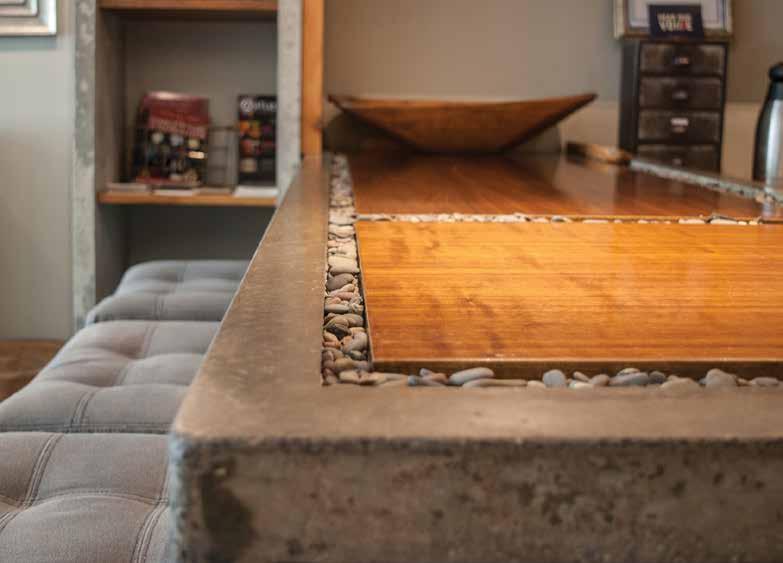
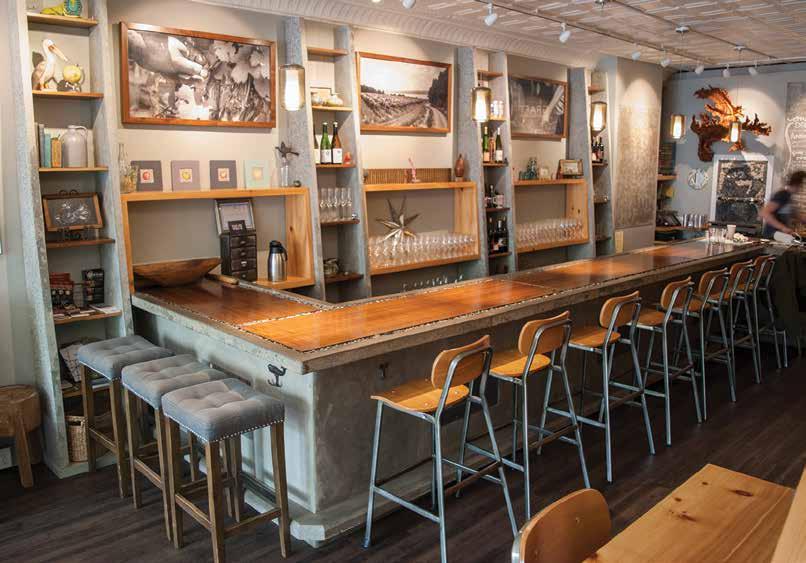
By Michael Le
Ask a wine enthusiast about their favorite eateries in Watkins Glen, and you’ll likely hear “Graft Wine + Cider Bar” quite a few times. And for good reason. The farm-to-table restaurant has gained a reputation for its signature menu and thoughtful wine pairings.
Date-night chatter feels second nature when sipping a cabernet at the tasting bar, which features an elegant stone moat surrounding a wooden inset.
When former owners Ted and Katie Marks approached integrated architectural firm Trade Design Build, they envisioned a space that celebrated the caliber of agricultural products in Schuyler County and the artisans who made them.
“The strength of the craft beverage market is directly tied to the region,” recalled Gideon Stone, partner at Trade. “Ted and Katie wanted people to experience the bountiful wines, ciders and beers created from growing or using locally grown produce. So, we reflected that in Graft’s design by sourcing local building materials like walnut, pine and stone.”
Behind the bar, a series of display shelves highlight Schuyler County wines and beverages among other selections.
“We kept coming back to the idea of seasonality, so I incorporated a
rhythm into the design.” added Stone. “If you look around, you’ll notice some elements repeated in threes and fours throughout.”
The result is an inviting bar built with native materials in a simple composition – perfect for wine connoisseurs experiencing Watkins Glen. Current owner and chef Orlando Rodriguez maintains Graft’s spirit by showcasing the potential of New Yorkmade fare.
Trade has made a name for itself in the hospitality and agritourism sector for its intentional design approach. Just as the terroir of a vintage captures its environment,
Trade works with wine makers, brewers and restaurateurs to create spaces that honor the communities they serve

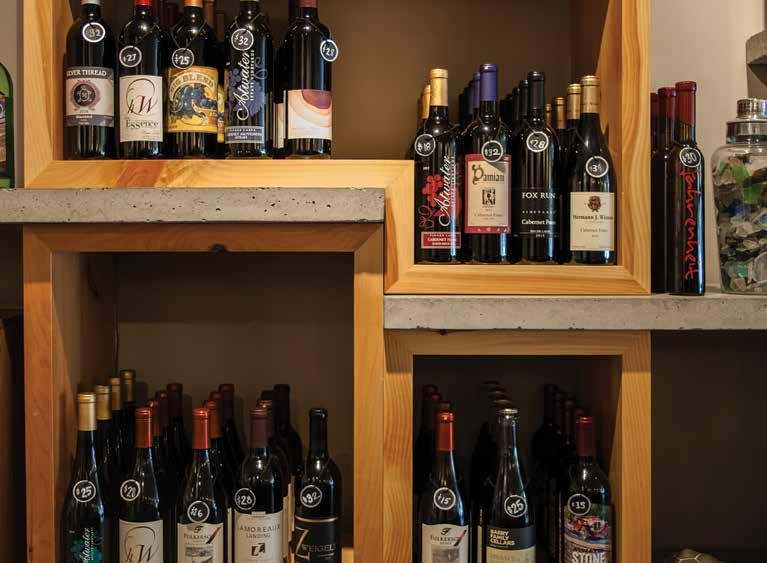
while sharing a fresh perspective.
It’s a client-forward process that’s earned Trade several recognitions, including the coveted 2025 Entrepreneur of the Year award from the Tompkins Chamber of Commerce.
“One of our design goals is to bring visual diversity to the places we’ve grown up in,” shared Michael Barnoski, partner at Trade. “Our clients have a clear vision of their brand and the experiences they’re trying to cultivate. Often that comes with a deep appreciation for the local environment.”
Recently, Trade worked with Ben Riccardi, owner of Osmote Tasting Pavilion, to design a year-round venue where visitors could sample Schuyler County’s natural wines among the serene landscape.
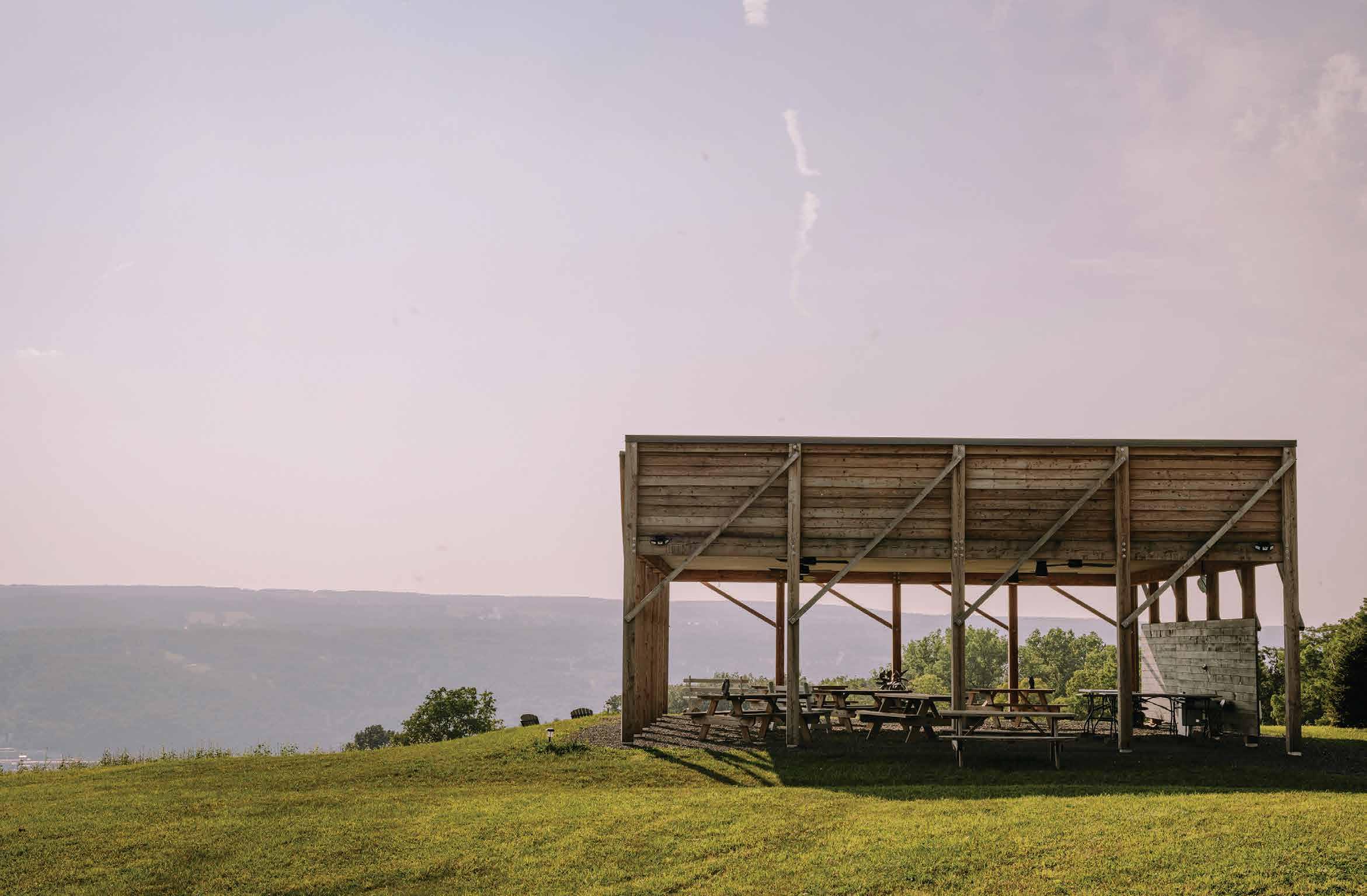
Riccardi’s wine philosophy centers on “osmosis,” the idea of returning to balance in a region defined by water, and the integral role of the Finger Lakes in growing hybrid varietals nearly exclusive to the area.
To reflect this dynamic, Trade built an open-air tasting pavilion – a wall-less structure with rustic picnic tables overlooking Seneca Lake.
It’s a distillation of the core tasting experience: the wine, the people and the land.
Keen-eyed visitors may notice that the layers of exposed timber and diagonal bracing echo the region’s historic Amish-style pole barns.
“Before construction, we consulted a local Amish pole barn-building company to ensure we accurately replicated their technique,” said Barnoski. “While Osmote’s design stands out, it’s actually a reinterpretation of the community’s signature architecture into a unique space.”
Even the emphasis on larch wood, which grows abundantly in the Finger Lakes, is a callback to the region’s roots and allows the pavilion to blend seamlessly with its surroundings.


Trade’s work on some of Schuyler County’s most beloved wineries is just the beginning for a new generation of local entrepreneurs. As emerging wine makers and vineyards strive to distinguish themselves from the dime-adozen tasting rooms, there’s a clear appetite for experiences that feel synonymous with the land.
For wine enthusiasts, that means a gleeful return to hyper-local tasting rooms, seasonal provisions and storydriven architecture told through a contemporary lens.
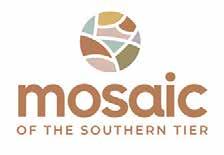
You’re not alone—and you don’t have to do this on your own. At Mosaic, we offer free material support - like diapers, clothing, and baby supplies - along with parenting education to empower moms and dads through every stage of the journey. Whether you’re preparing for a new arrival or navigating the toddler years, we’re here to help - with practical resources and encouragement every step of the way.
Because every parent deserves support. Because every child deserves love.

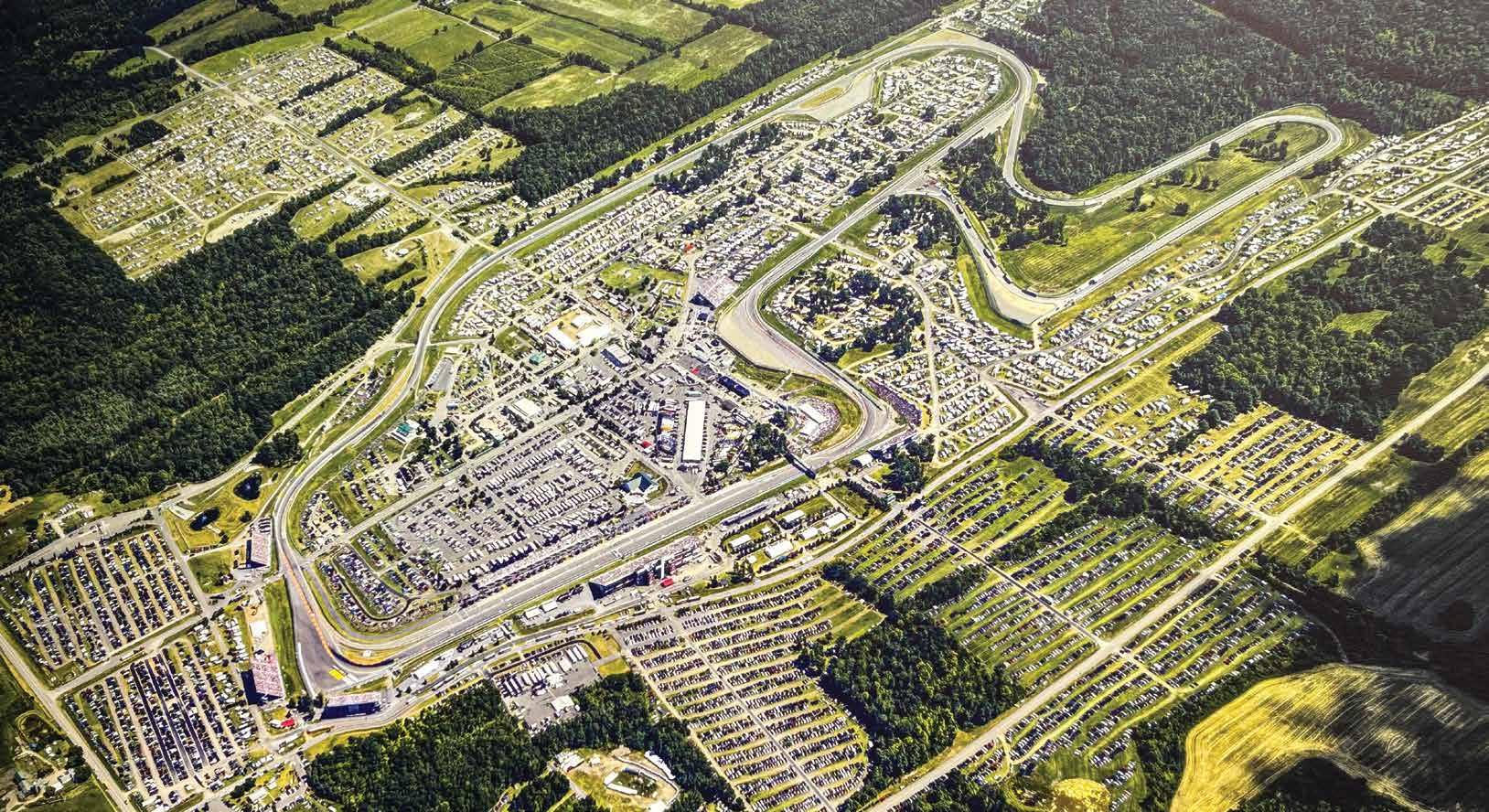
by Dawn Burlew, President, Watkins Glen International
Whenpeople think of Watkins Glen International (WGI), the roar of engines and the excitement of world-class racing events often comes to mind. However, this iconic track is much more than a motorsports destination. It has evolved into a vital community hub, hosting a variety of events that bring people together, celebrate local culture and makes a lasting impact on the Finger Lakes Region.
“With more than 175 days of cars on track, we are busy seven days a week with visitors from all around the world
old, with tons of history and memories when you talk with the owners,” said Burlew. “Every car that enters the track for a lap has a story to tell or a memory to share as to why they came to the Glen, and no two are alike.”
Similarly, the Bike the Glen events invite cyclists to pedal their way around the track, with proceeds benefiting local nonprofit organizations that are picked by the WGI team members. In fall 2024, proceeds benefited the Watkins Glen, Odessa-Montour and Bradfords Schools Parent Teacher Organizations, Schuyler Health Foundation

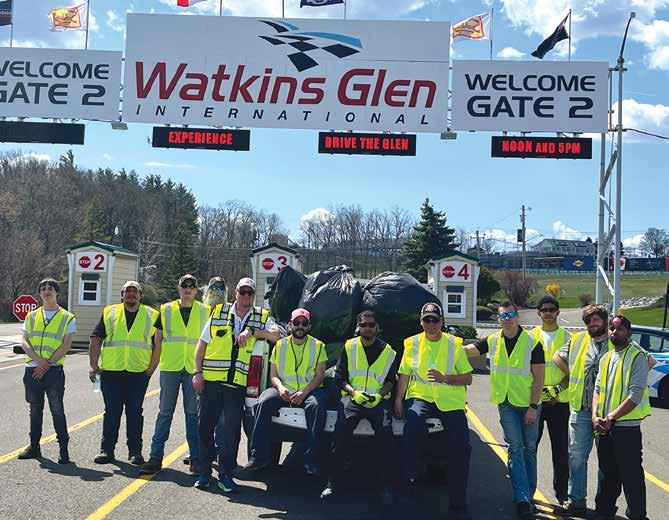
WGI has taken steps to make race weekends more inclusive. Events like glow-stick track walks brings fans of all ages onto the track in a fun and interactive way. In addition to racing, WGI has embraced the arts with its summer concert at the Mission Party Deck. Free live performances by regional musicians offer a relaxed and family-friendly atmosphere. Guests can enjoy tunes, local foods, spirits, yard games and a car show.
Another unique event that the Glen sponsors is the Green Grand Prix in early spring. The single-day event showcases motoring technology that aims for a cleaner environment and a fuel-efficiency competition for drivers of alternate-fuel vehicles, hybrids, and traditional gasoline-powered and diesel-powered vehicles. Individuals, colleges, universities, car clubs and manufactures all complete with the hopes to move our region to become a center for clean energy.
WGI is committed to having a positive impact on the communities where we live, work and, of course, race, while providing employees with the time and flexibility to make a difference in their own special way.

NASCAR’s new volunteerism platform includes paid time off to volunteers as well as special NASCAR service week and engagement opportunities. This year, the WGI Operations & Maintenance team completed more than 2 miles of roadside clean-up of County Route 16 leading to the track’s main entrance; more than two truckloads of trash was recycled or properly disposed of by the track. The Glen is actively managing a multi-pronged recycling program to reduce landfill waste from all the events at the track – including glass, metal, cardboard and plastic. This summer, a carboard bailer will be used on site to reduce cardboard trash.
“Watkins Glen International is more than a racetrack – it’s a gathering place for people from all corners of the world,” Burlew said. “By blending motorsports with community engagement, WGI has carved out a unique role as a beloved institution in the Finger Lakes Region. As WGI continues to innovate and expand its programming, its impact on the community is sure to grow for years to come. When we succeed, the community succeeds.”
